Interior Design (Hardware - Reviewer)
1/192
There's no tags or description
Looks like no tags are added yet.
Name | Mastery | Learn | Test | Matching | Spaced |
|---|
No study sessions yet.
193 Terms
rough hardware
Hardware meant to be concealed, such as bolts, nails, screws, spikes, and other metal fittings.
finish hardware
Exposed hardware serving a decorative as well as a utilitarian purpose, as the locks, hinges, and other accessories for doors, windows, and cabinetwork
nails
straight, slender piece of metal having one end pointed and the other enlarged and flattened for hammering into wood or other building materials as a fastener
bullet head nail
general purpose nail with a small head allowing to be punched below timber surface then filled; suitable for framing, planking and cabinet work

clout nail
large flat head is to support material being fixed. For fixing metal sheeting, strapping, brackets, conduit and pipe clips
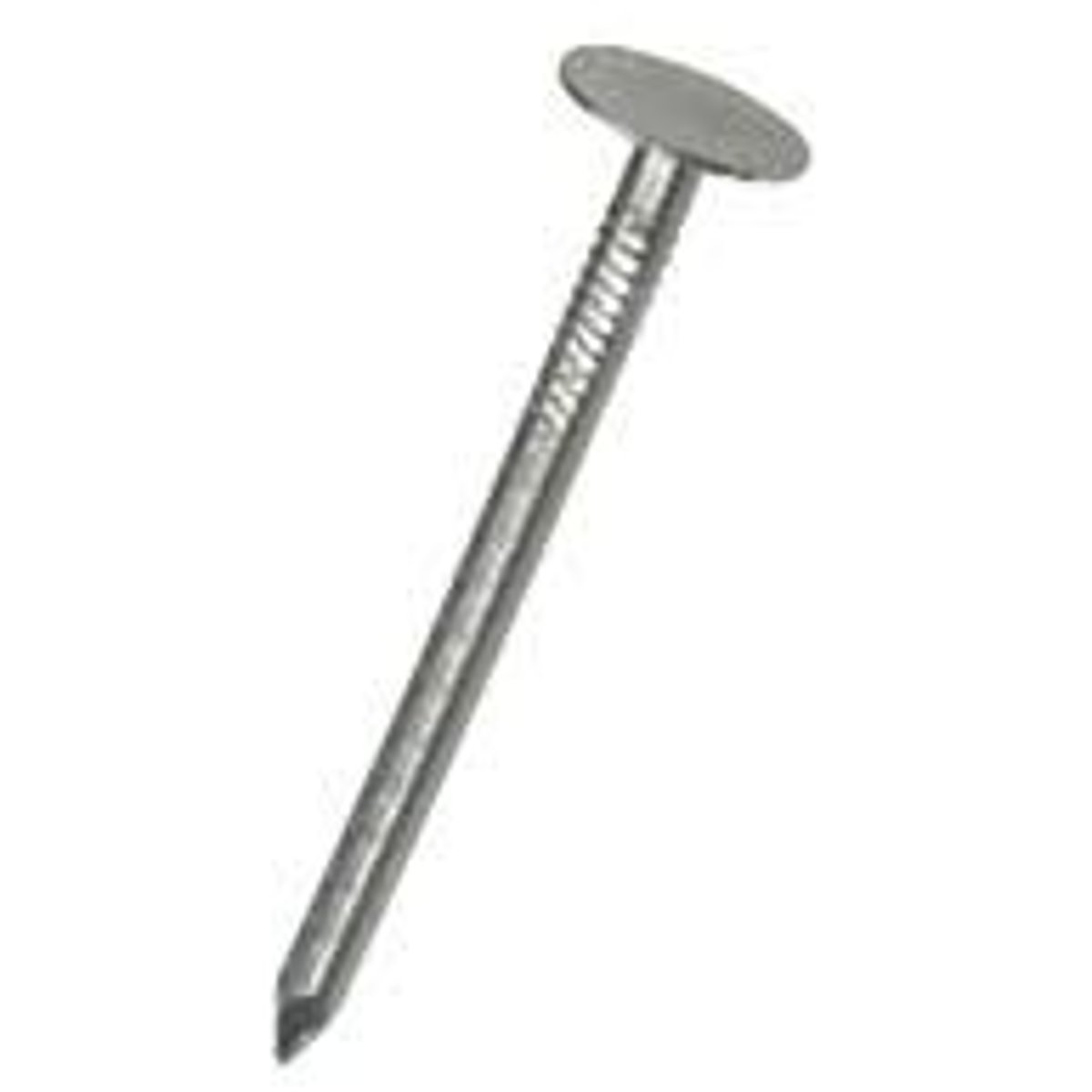
deck spike nail
Used for fixing large size timbers such as railway sleepers. Galvanized coated for extra protection against corrosion
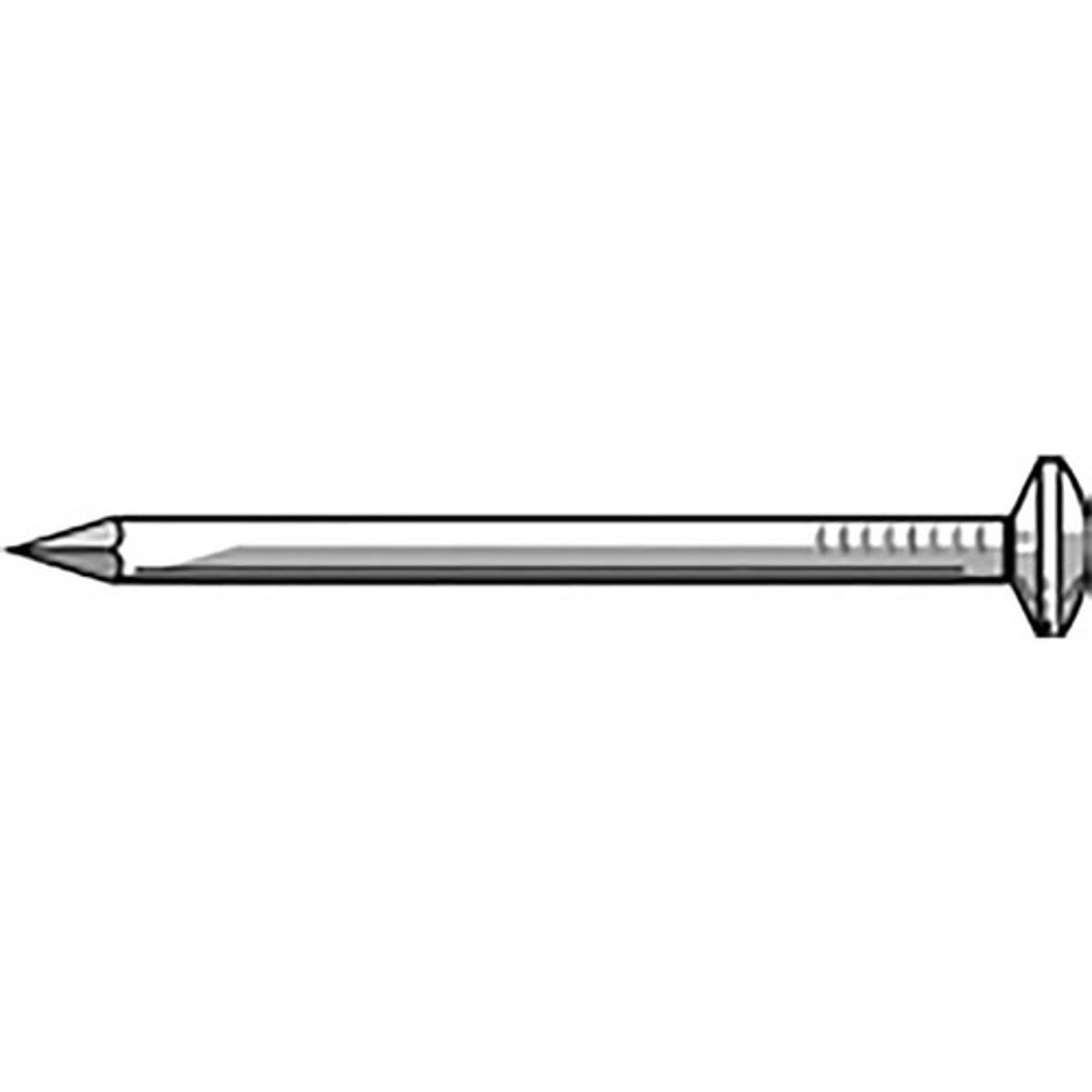
duplex nail
used in formwork applications and fastening temporary work - the second head is left exposed for easy removal and for attaching a string line

fiber cement nail
for fixing fiber cement sheeting such as hardiflex and villaboard to timber framing
flathead nail
used mainly with softwoods and thing timber, fencing, planking and crating. Flat head helps stop timber pulling over head

underlay nail
used for fixing hardboard and fiber cement underlay sheeting to timber floors
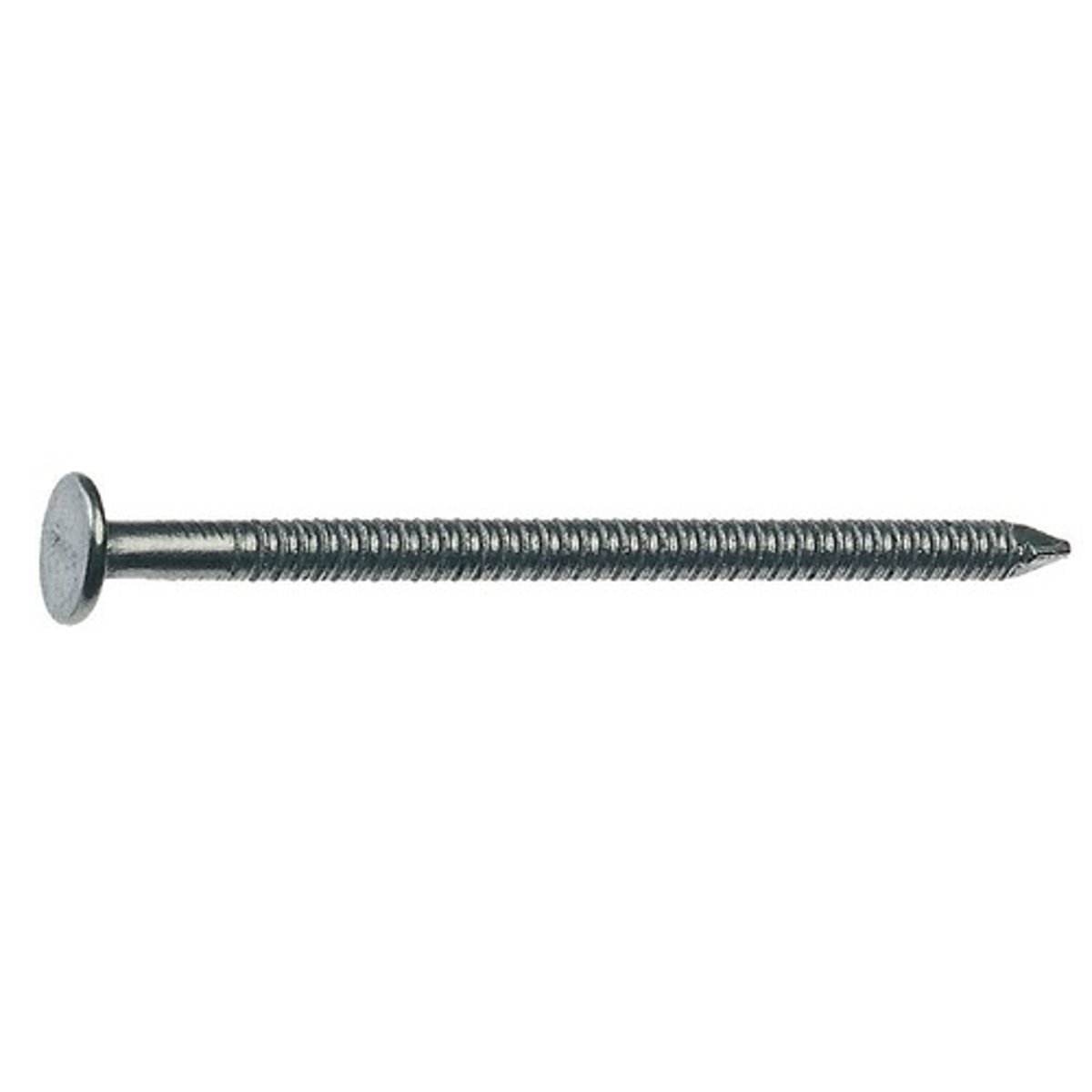
masonry nail
a hardened steel nail with a knurled or fluted shank; esp. used for fastening to masonry.
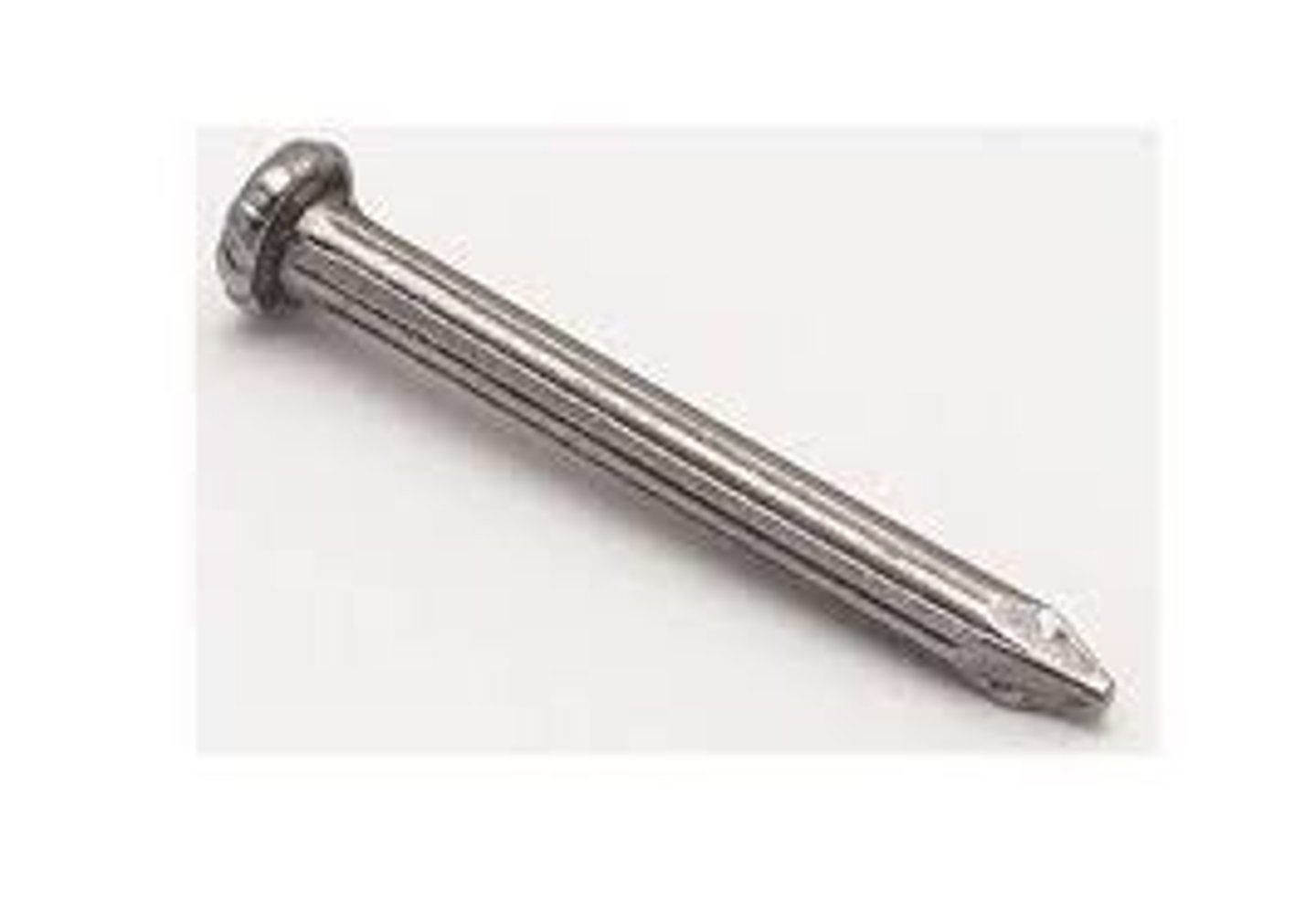
pallet nail
used with softwoods, fencing, pallets and crating. Twisted shank provides stronger holding power
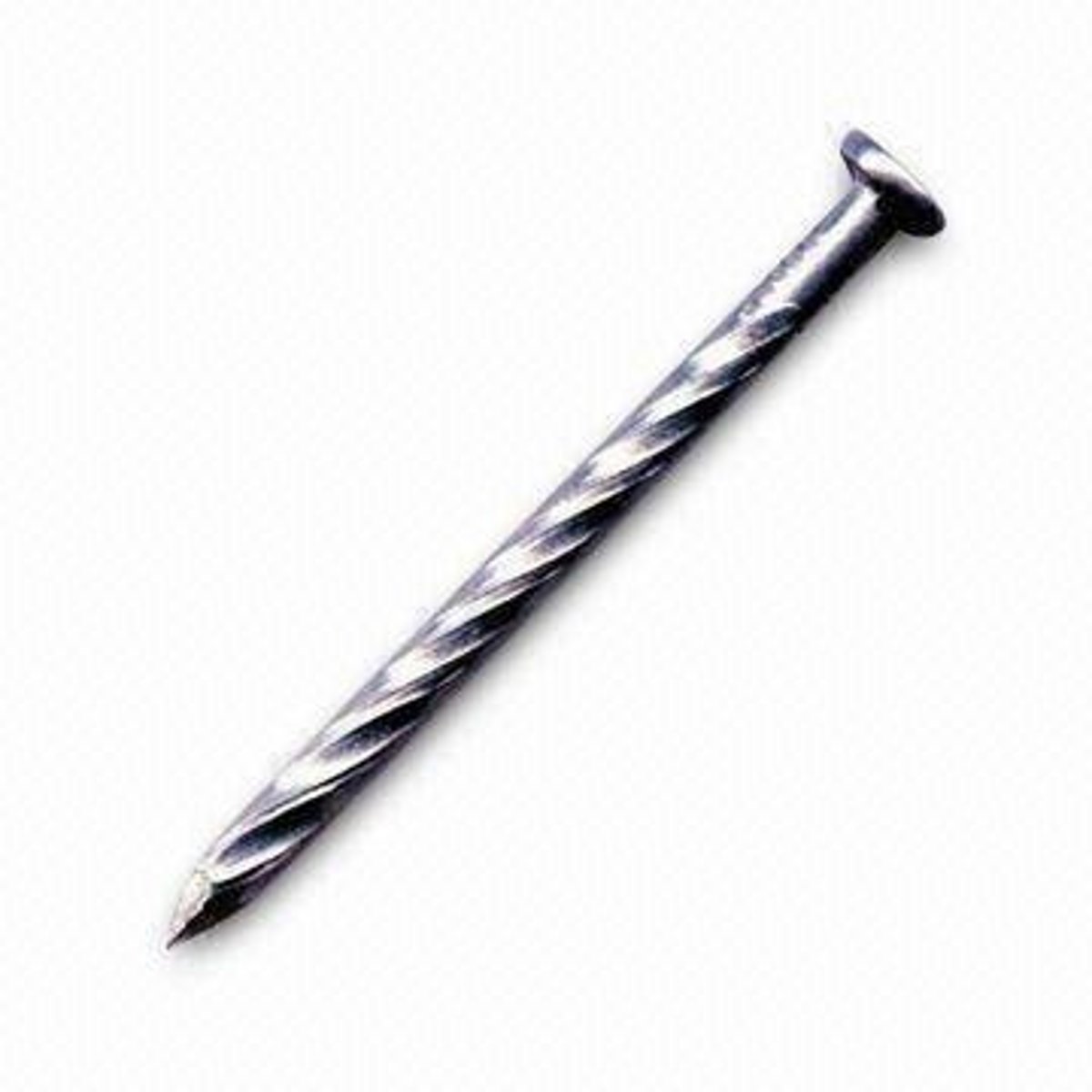
plasterboard nail
fixes plasterboard to timber framing. Has an annular thread for greater holding power in timber
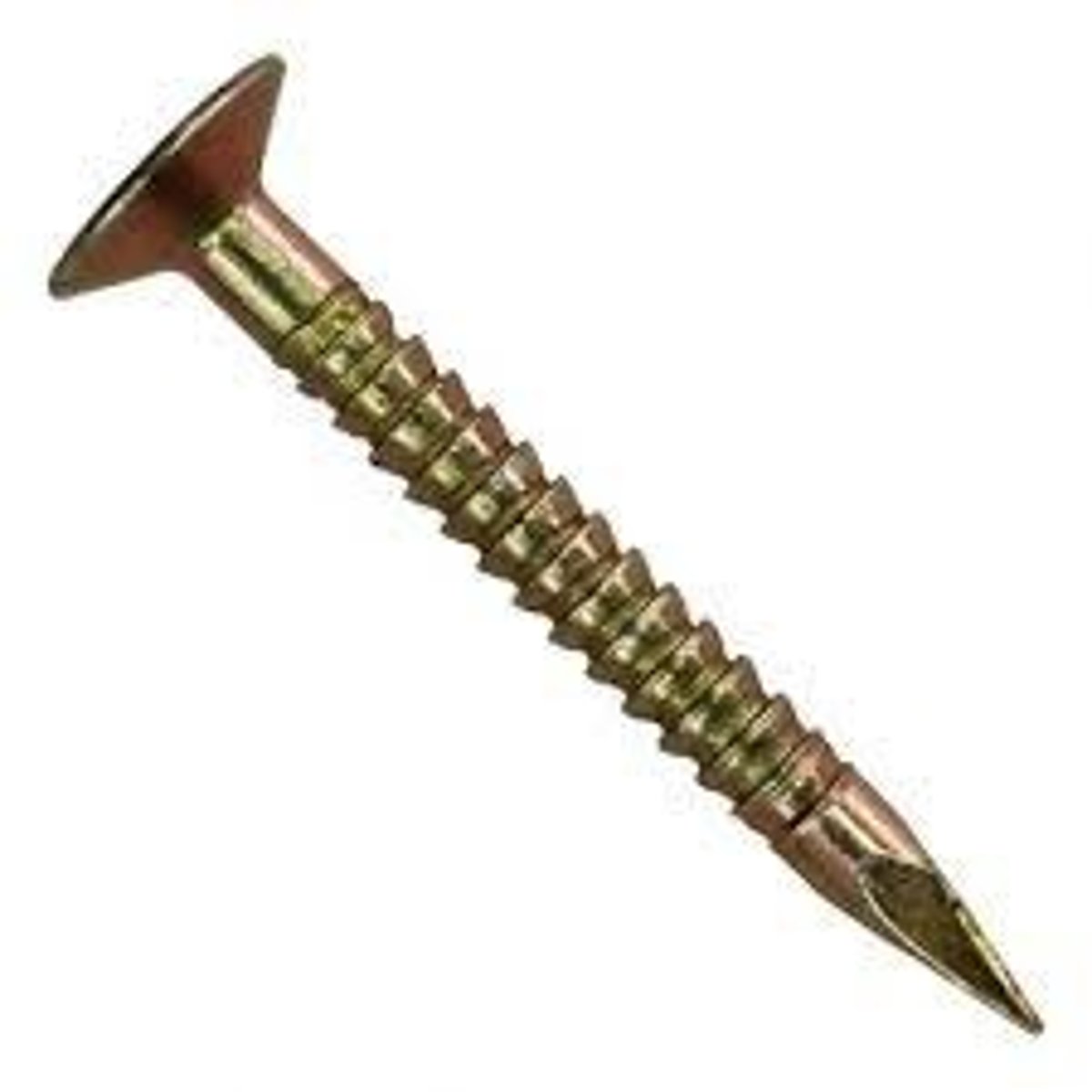
roofing nail
For nailing tin, aluminum, fiberglass or asphalt roofing; twisted shank provides greater holding power in soft timbers

softsheet nail
for light ply, mdf, etc. where appearance is not the main factor and particularly where the panel needs to be held firmly
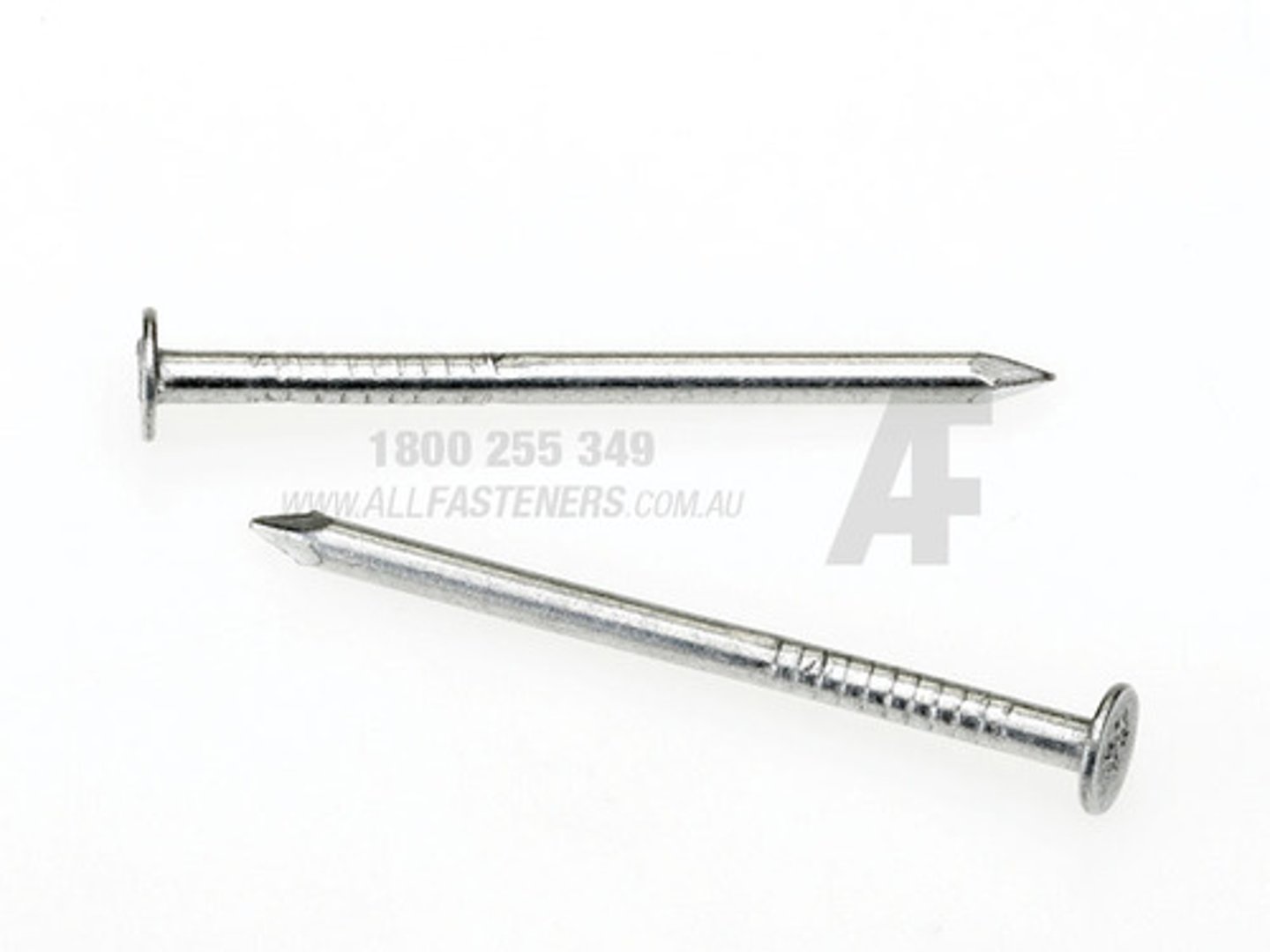
surveyor nail
for marking points in bitumen and asphalt; large washer in galvanized finish
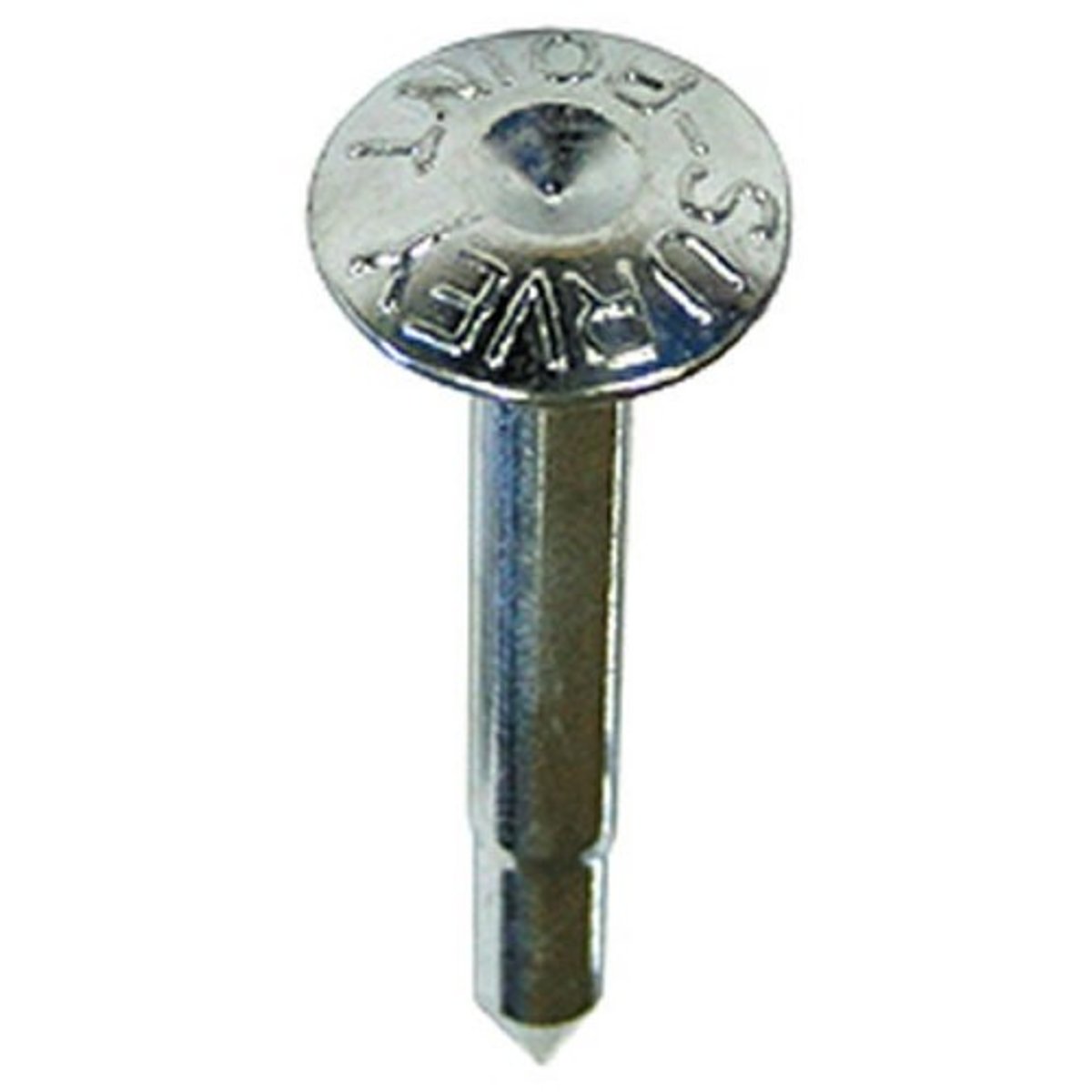
blue cut tack
Can be used for fixing textile materials to wood for example, fixing upholstery to furniture. Very short with relatively large head and very sharp point
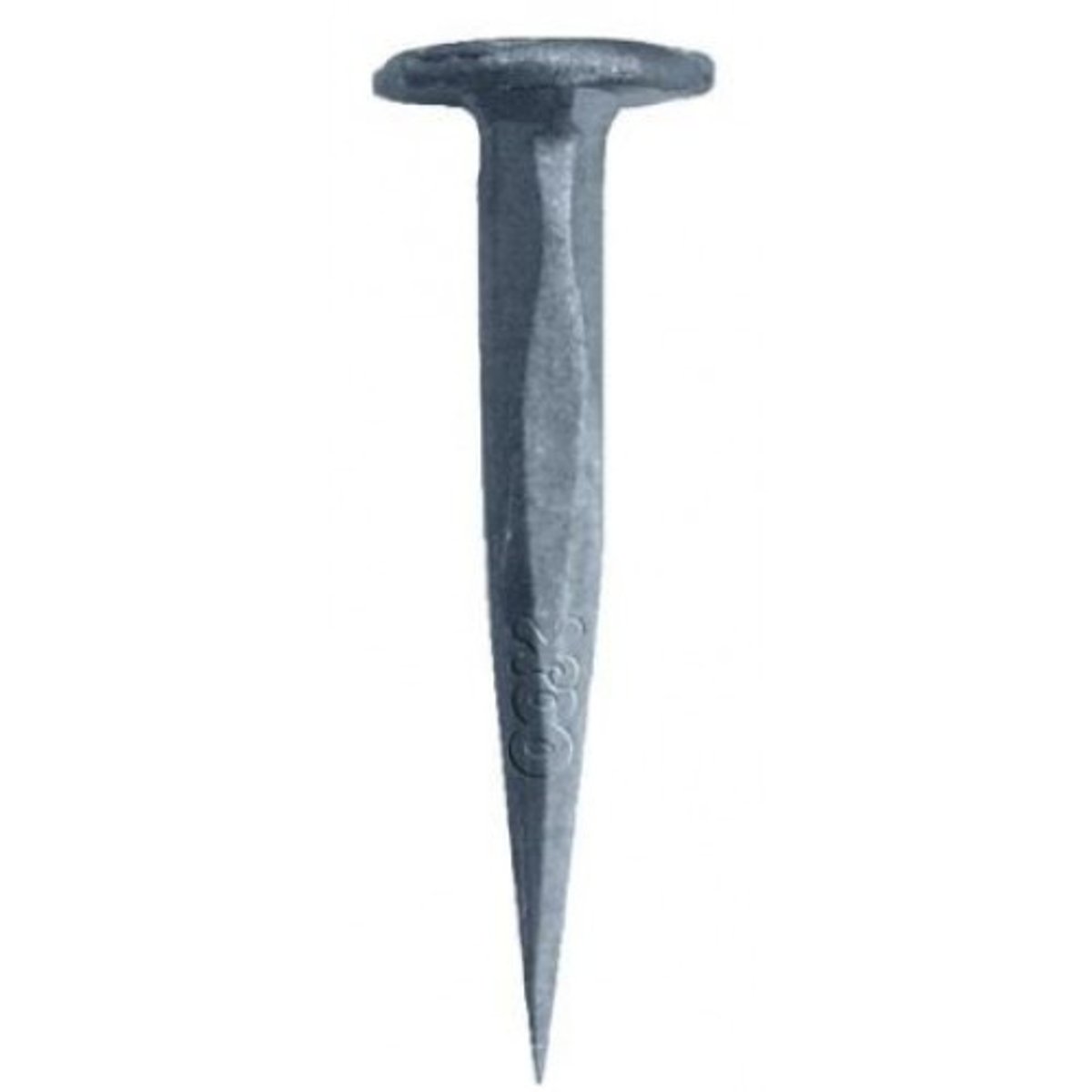
timbergrip nail
specially designed head allows for the head to be driven below timber surface. Screw thread adds extra holding power in soft timber. Used in decking and pergolas

staple
fixing wire and netting to timber posts and frams. An insulated version is often used to attach speaker and telephone wires to timber

wall panel nail
for attaching paneling to walls. Has a low profile and usually a ringed shank. Mostly used in conjunction with an adhesive
Weathertex nail
a 50mm x 2.8mm nail used to fix Weathertex to timber framing. Has a countersunk head and is galvanised to resist staining

bolt
A threaded metal pin or rod, usually having a head at one end, designed to be inserted through holes in assembled parts and secured by nut
nut
a square or hexagonal metal block perforated with a threaded hole to fit around and secure a bolt or screw
screw
metal fastener having a tapers, helically threaded shank and a slotted head, designed to be driven into wood or the like by turning, as with a screw driver
flat screw

round screw

oval screw

drawer guides or roller guides
attached to side walls of drawers. Lengths: 10", 14", 16", 18", 24", 26", 28"
Knock down fittings
sort of fittings found on flat-pack self assembly furniture products that allow the items to be assembled and disassembled many times
drawer pull screws
Used for drawer front knobs and pulls
hanger bolts
A bolt with a machine-screw thread on one end and a lag-screw thread on the other.

heavy duty universal connector
Heavy-duty cam-action fastener for extremely strong joints
threaded inserts
metal inserts with threads that protect the wood or board's screw slot
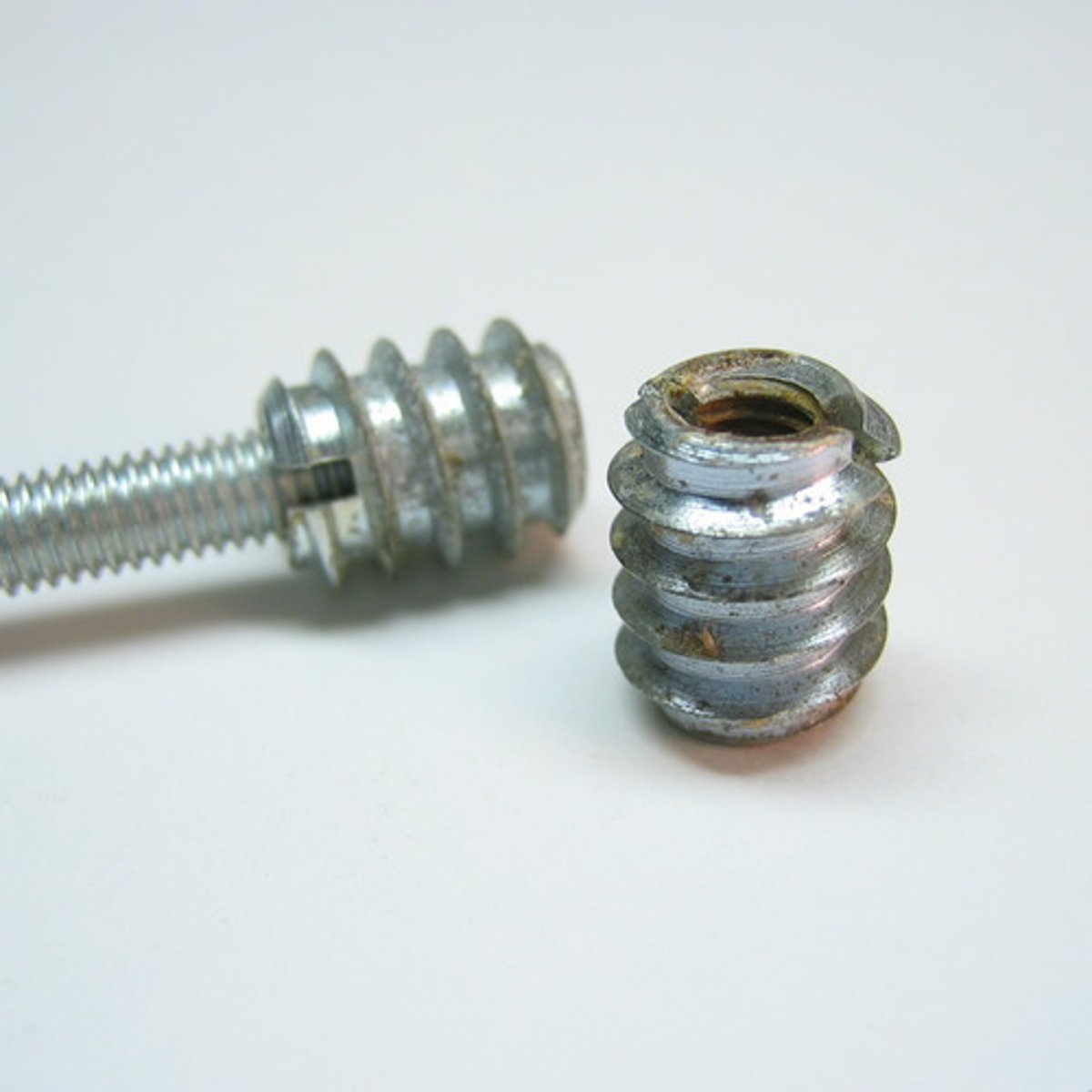
low profile threaded inserts
work well on thin materials such as exposed veneer seating

glider and glider tack
attached to the bottom of cabinets and chairs to keep them from slipping
hinges
For movable joints; used to support and turn a door above a pivot consisting of 2 plates joined together by a pin which supports a door and connect it to its frame enabling it to swing open or close
Full Mortise Hinge
is the most common type and has both leaves fully mortised into the frame and edge of the door.
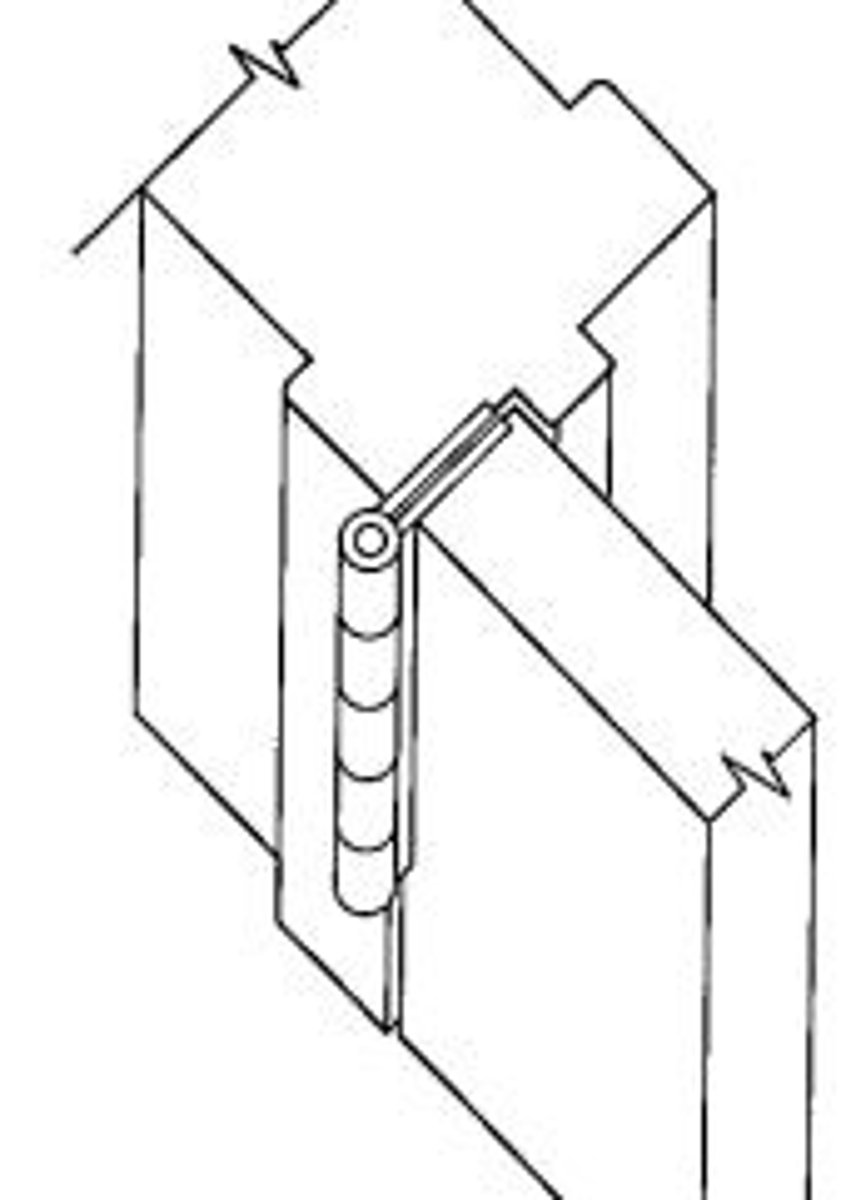
Full Surface Hinge/Flap Hinge/Backflap Hinge
Both leaves are applied to the surface, one to the door and the other to the frame

Half Mortise Hinge
A hinge having one leaf mortise into the edge of a door in the other surface mounted to the door frame

Half-Surface Hinge
A hinge having one leaf mortise into a door frame and the other surface mounted to the face of the door
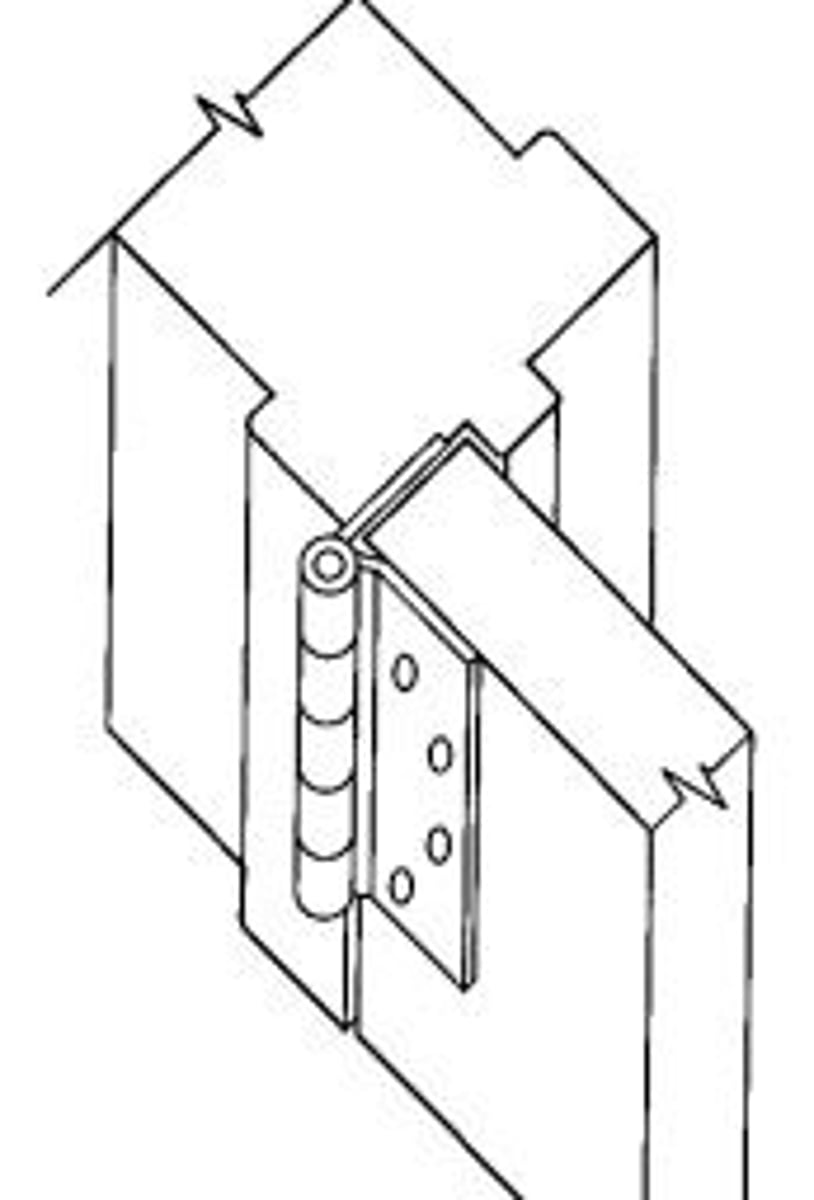
Butt Hinge
A hinge composed of two plates secured to the abutting surfaces of a door and doorjamb

template hinge
a mortise hinge manufactured to fit the recess and match the arrangement of holes of hollow metal doors and frames
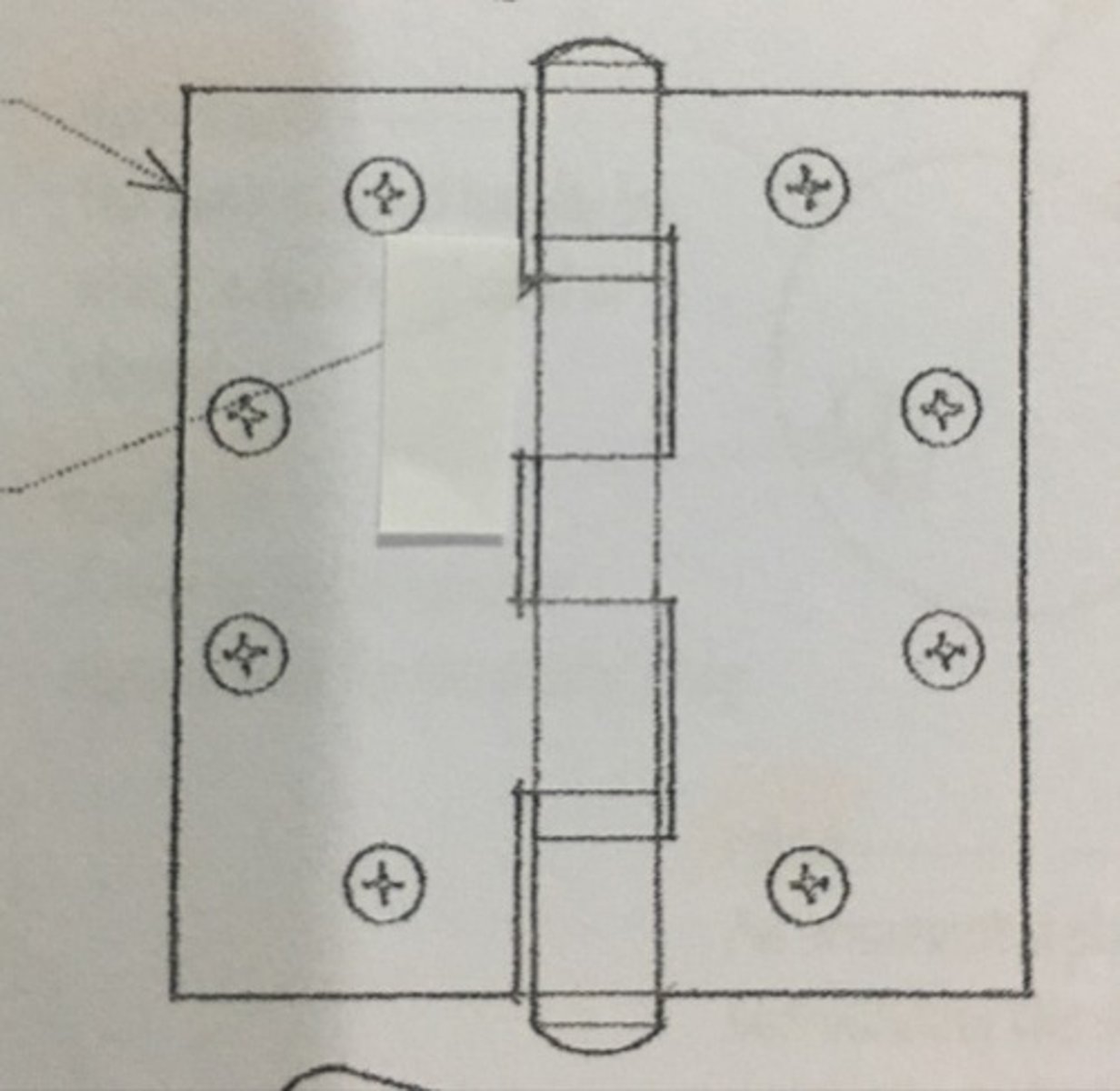
ball-bearing hinge
The hinge equipped with ball bearing between the knuckles to reduce friction and ensure ease of operation
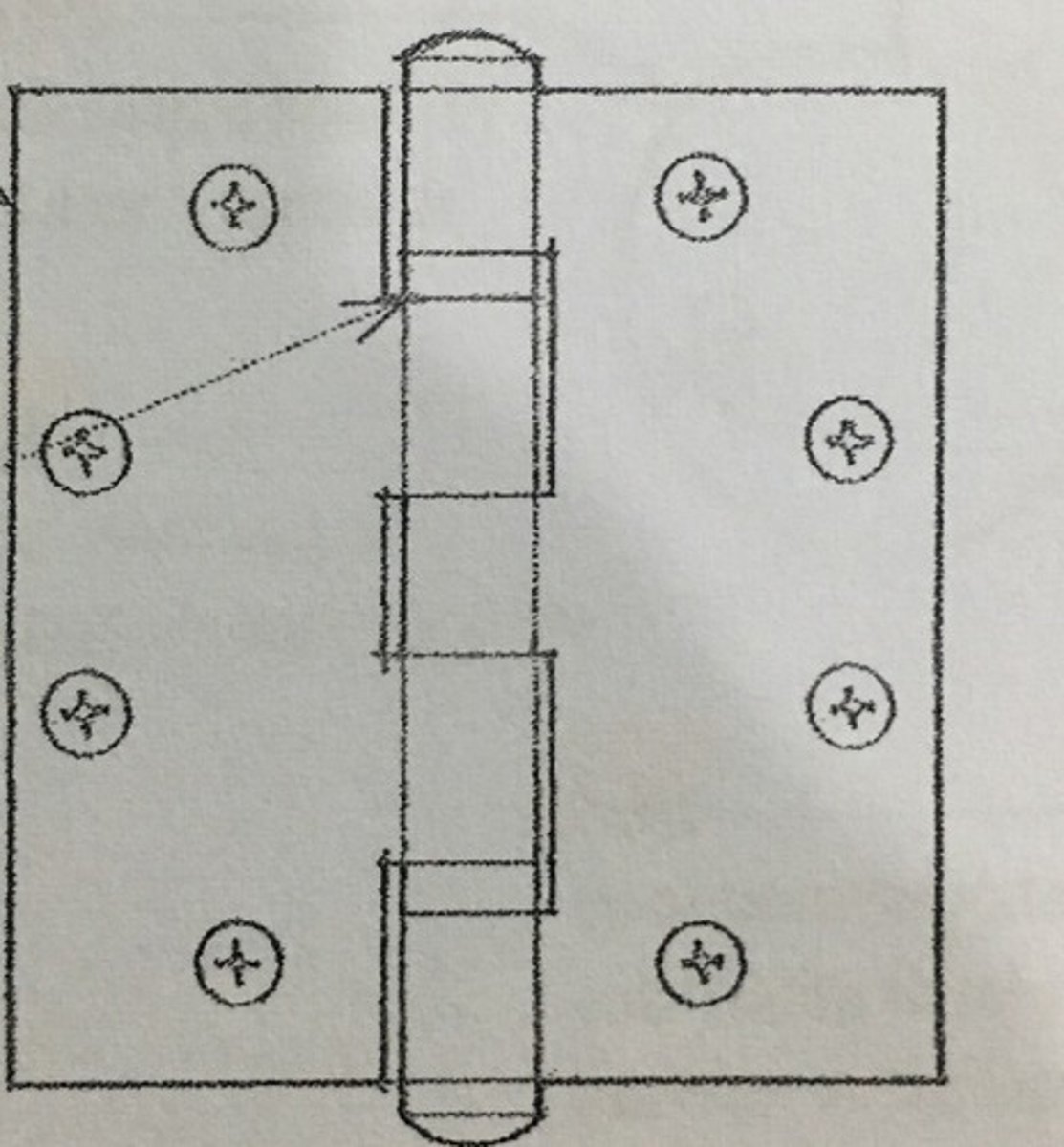
Fast pin hinge
The hinge having a non-removable pin
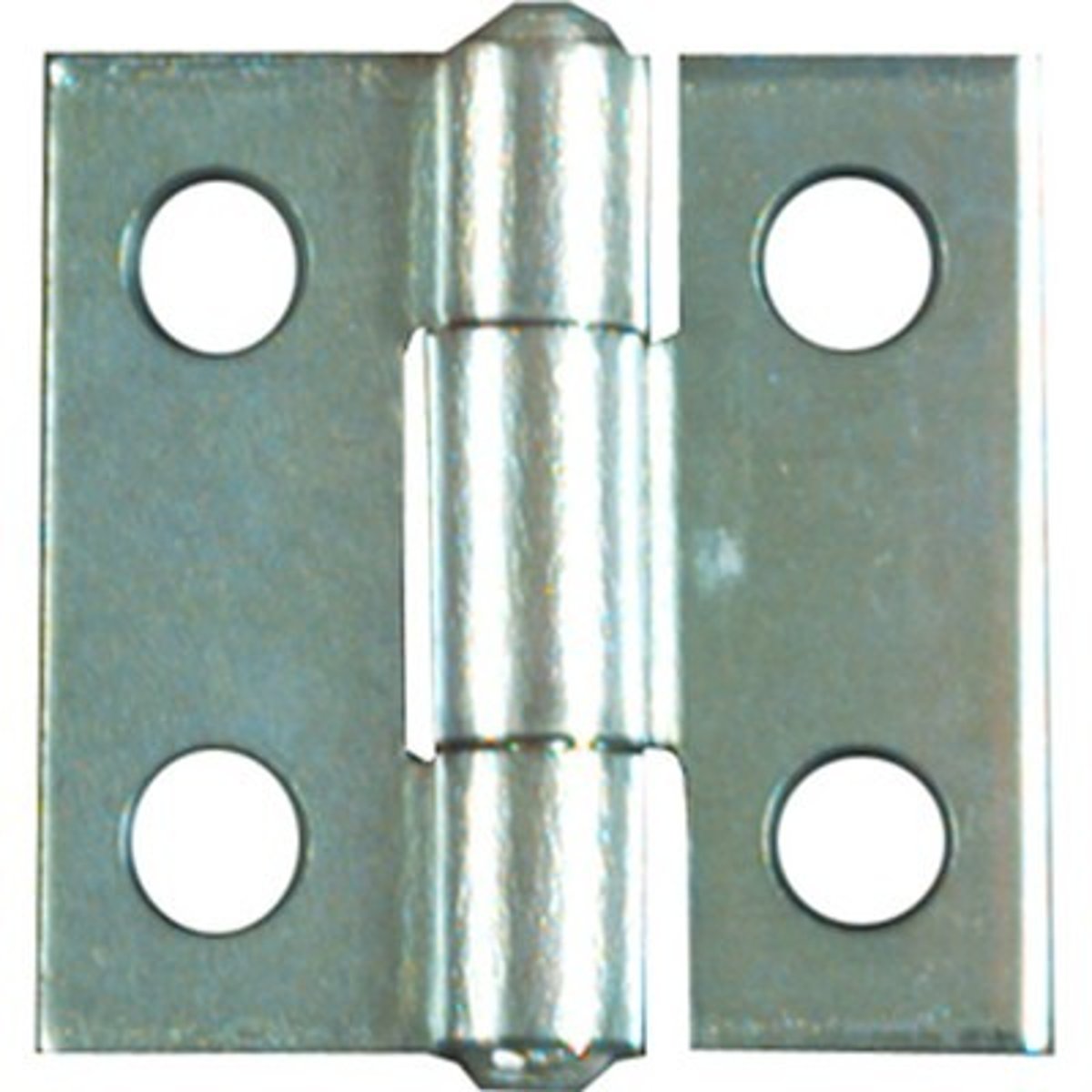
Loose pin hinge
a hinge having a removable pin which permits its two parts to be separated.
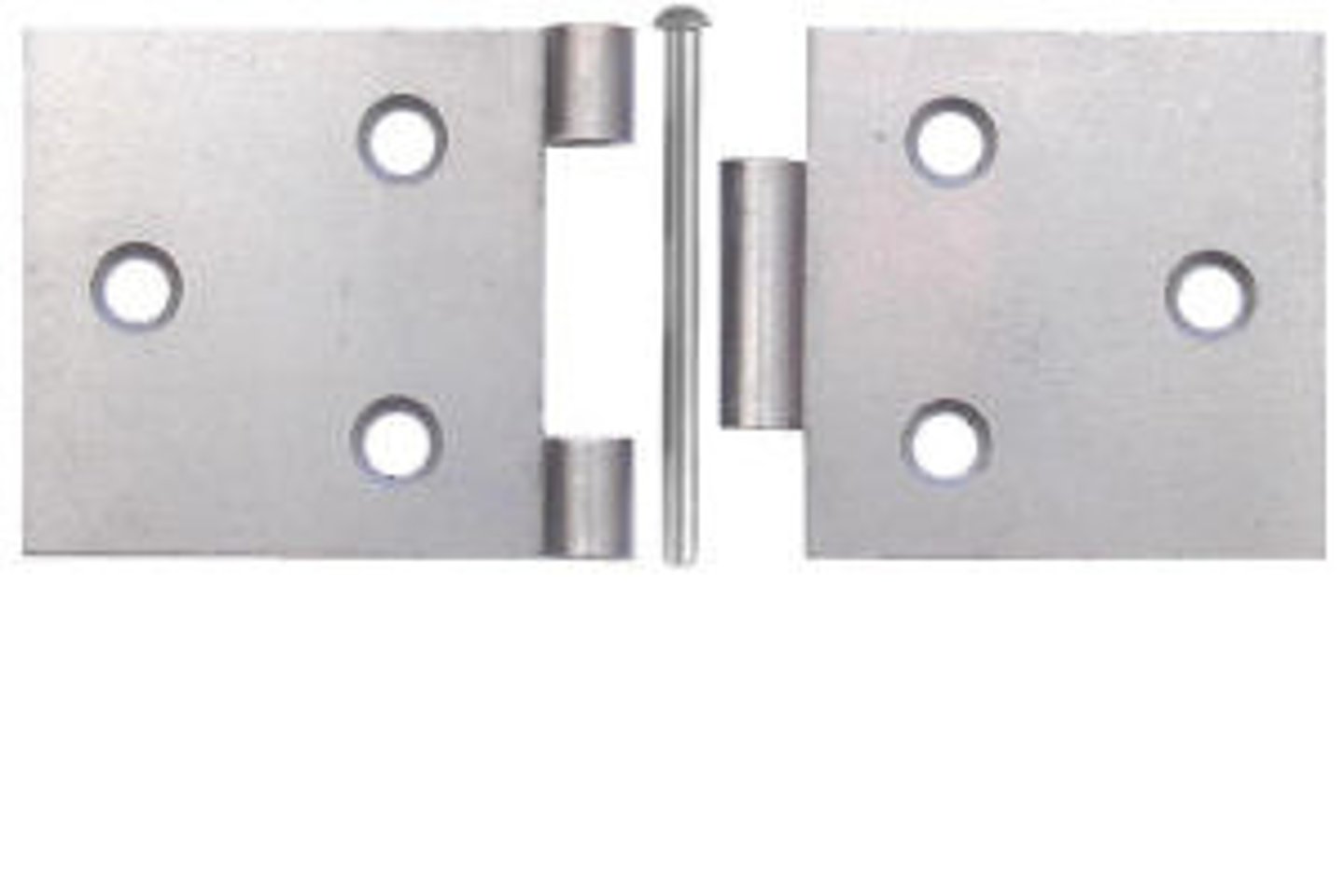
Piano Hinge
Long narrow hinge that run the FULL LENGTH of the two surface to which the leaves are joined.
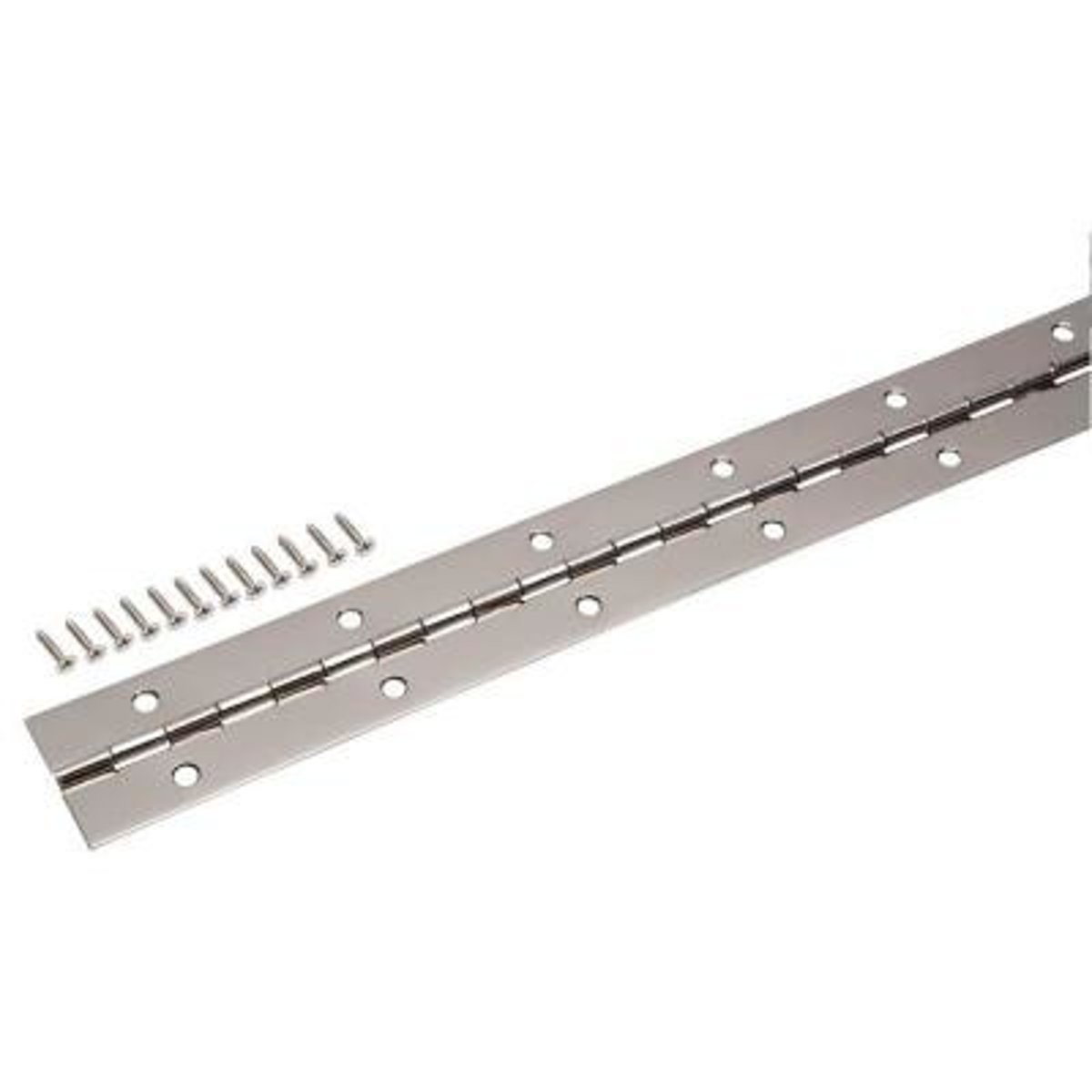
loose-joint hinge/liftoff hinge
a hinge having a knuckle formed from half of each leaf, with the upper half removable from the pin
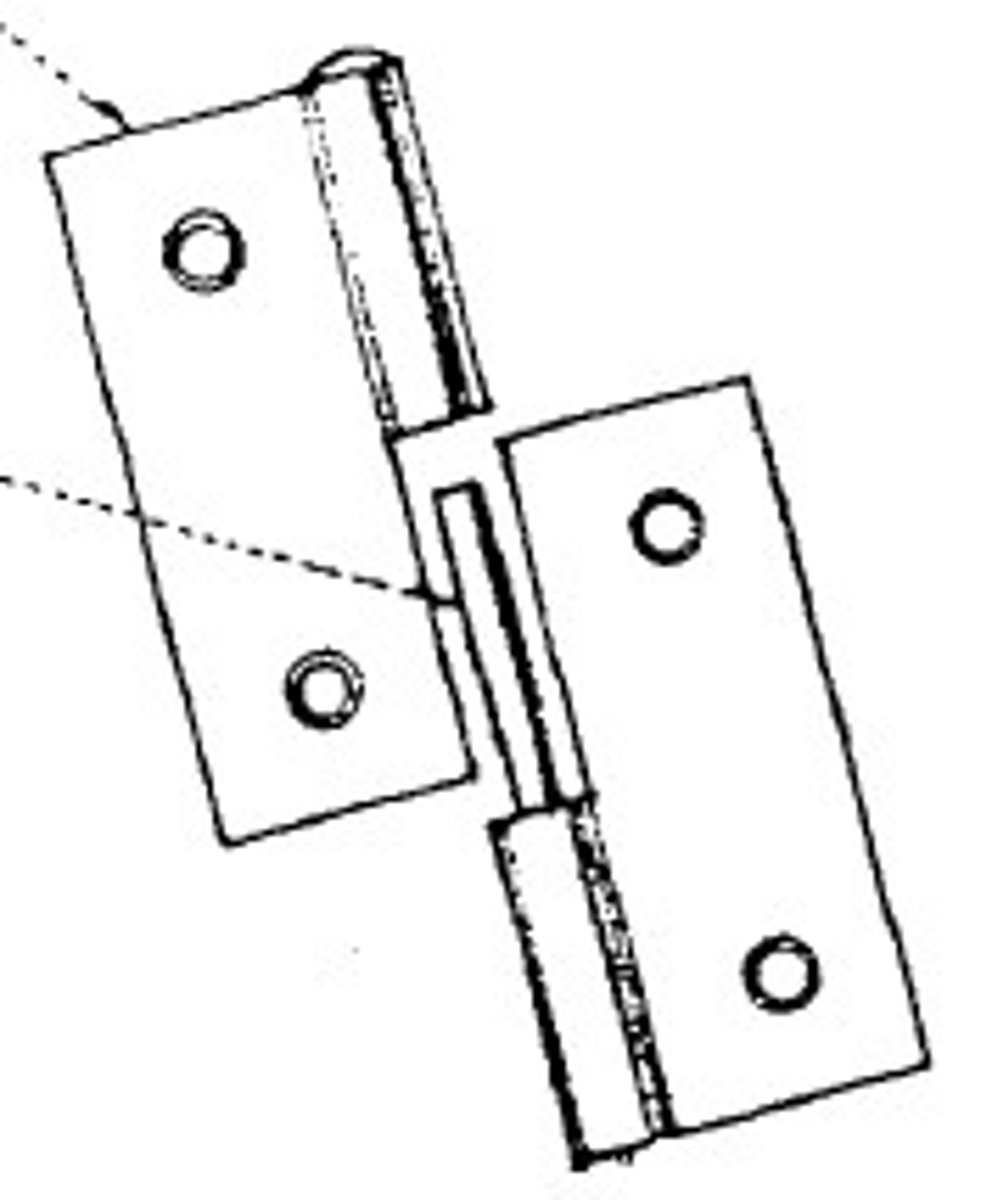
pintle
the pin or bolt on which something turns, such as the gudgeon of a hinge
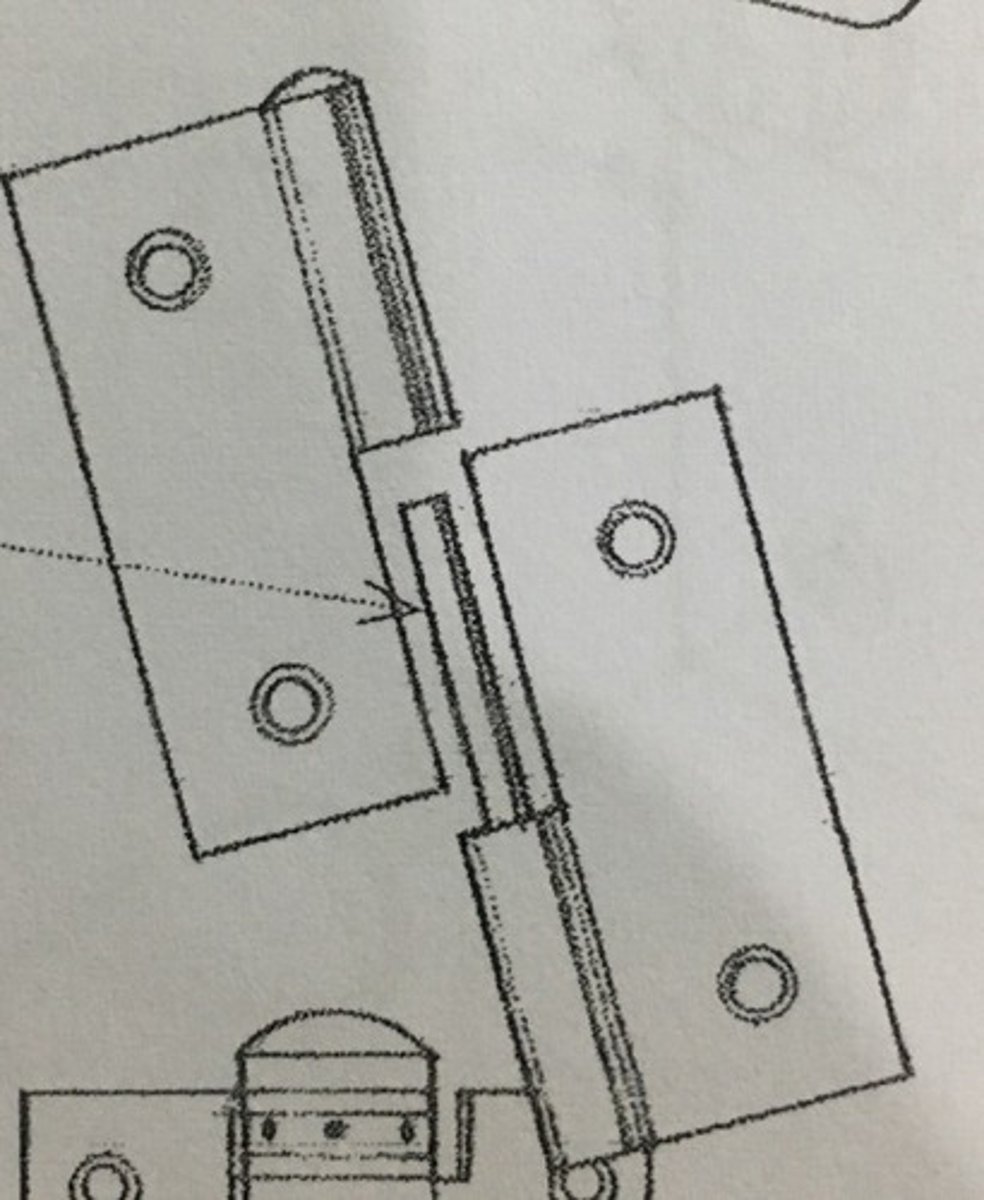
gudgeon
A socket for pintle of hinge
spring hinge
A hinge containing a coiled spring in its barrel for closing the door automatically

double-acting hinge
A hinge permitting a door to swing in either direction, usually fitted with springs to bring the door to a closed position after opening
T-hinge/Cross-garnet hinge
\A t-shaped hinge with the crosspiece as the stationary member and the long stem being the movable leaf.
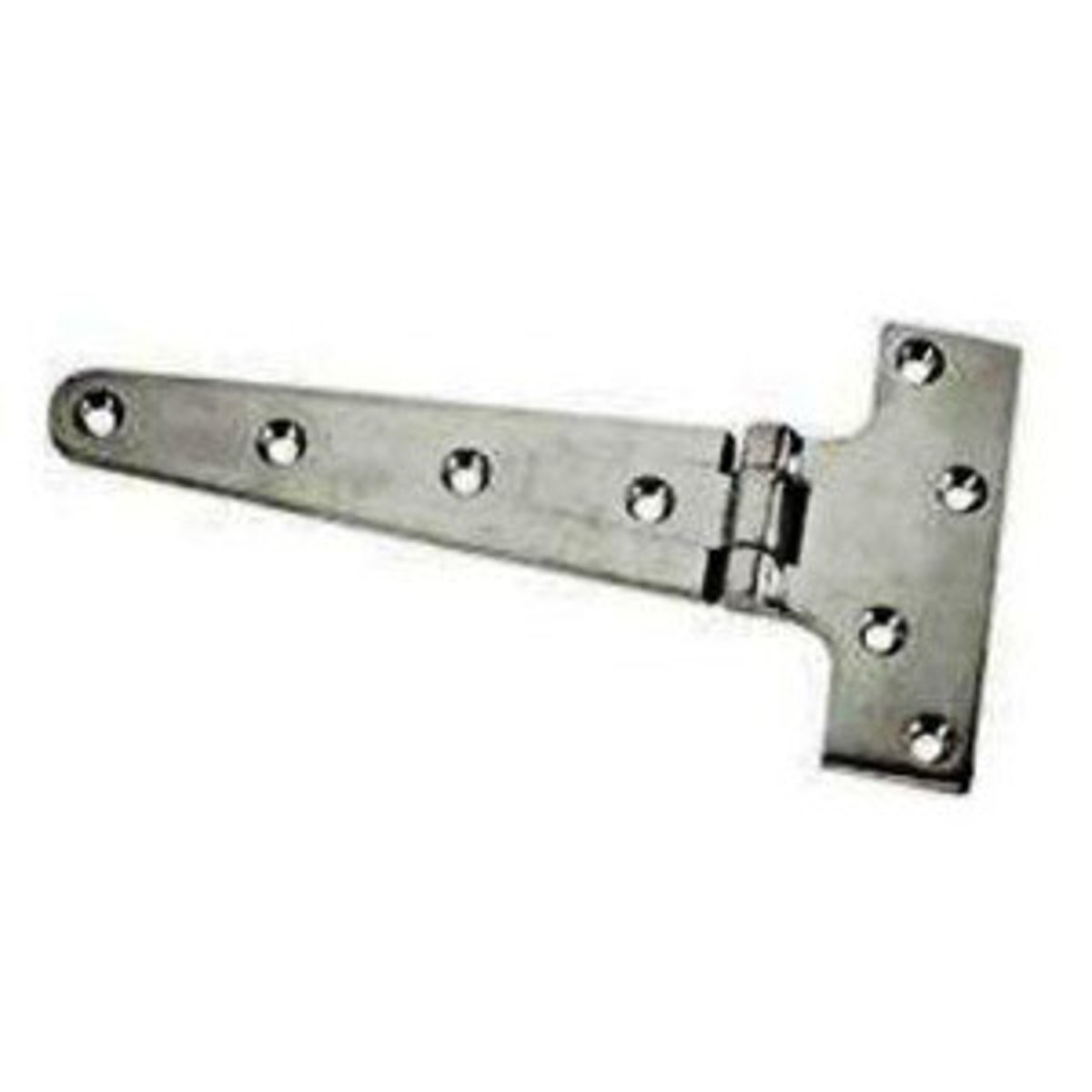
strap hinge
A hinge having two long leaves for securing to the adjacent faces of a door and doorjamb

dovetail hinge
A strap hinge having leaves that are narrower at their junction than at their other extremities

parliament hinge
An H-shaped hinge having a protruding knuckle so that a door can stand away from the wall when fully opened

paumelle
A hinge having a single, pivoting joint
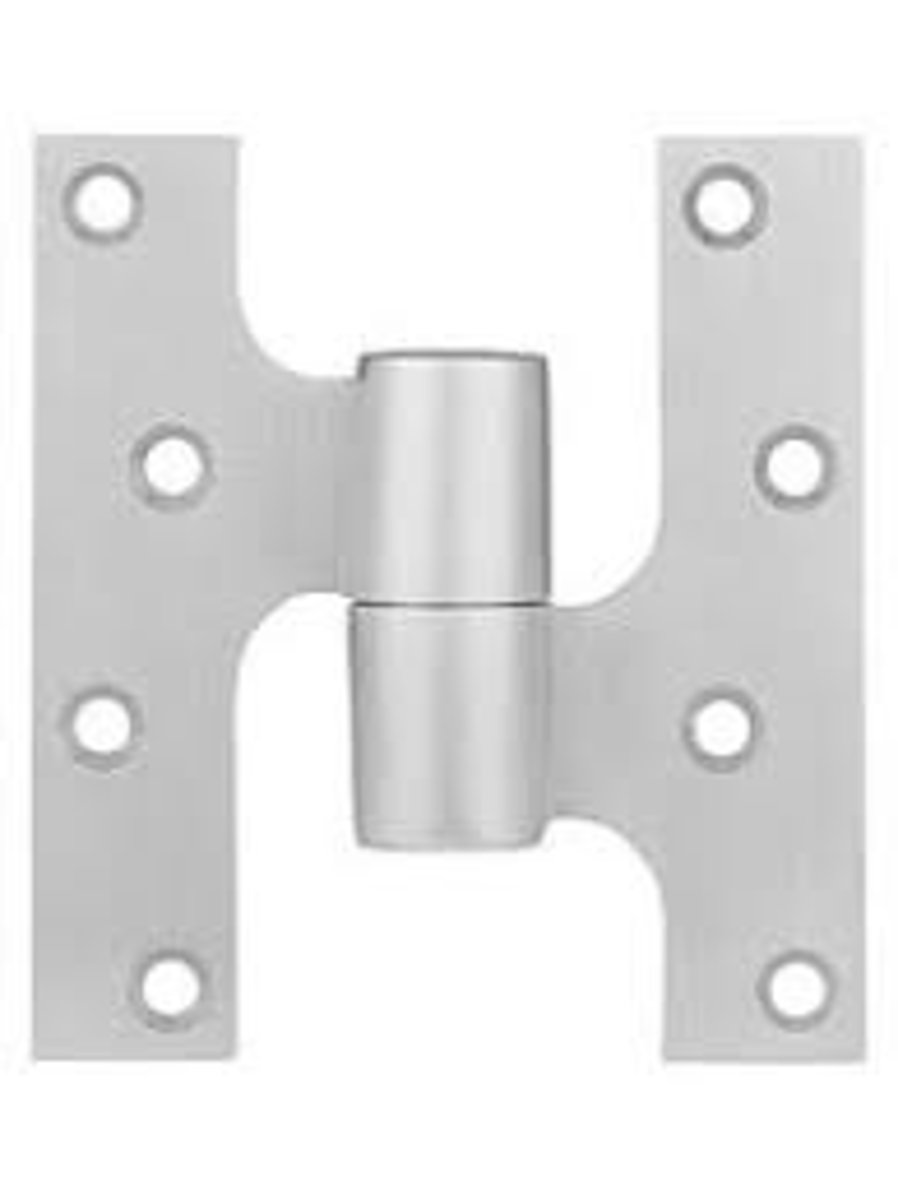
olive knuckle hinge
A paumelle having an oval-shaped knuckle
gravity hinge
A hinge that closes automatically by means of gravity
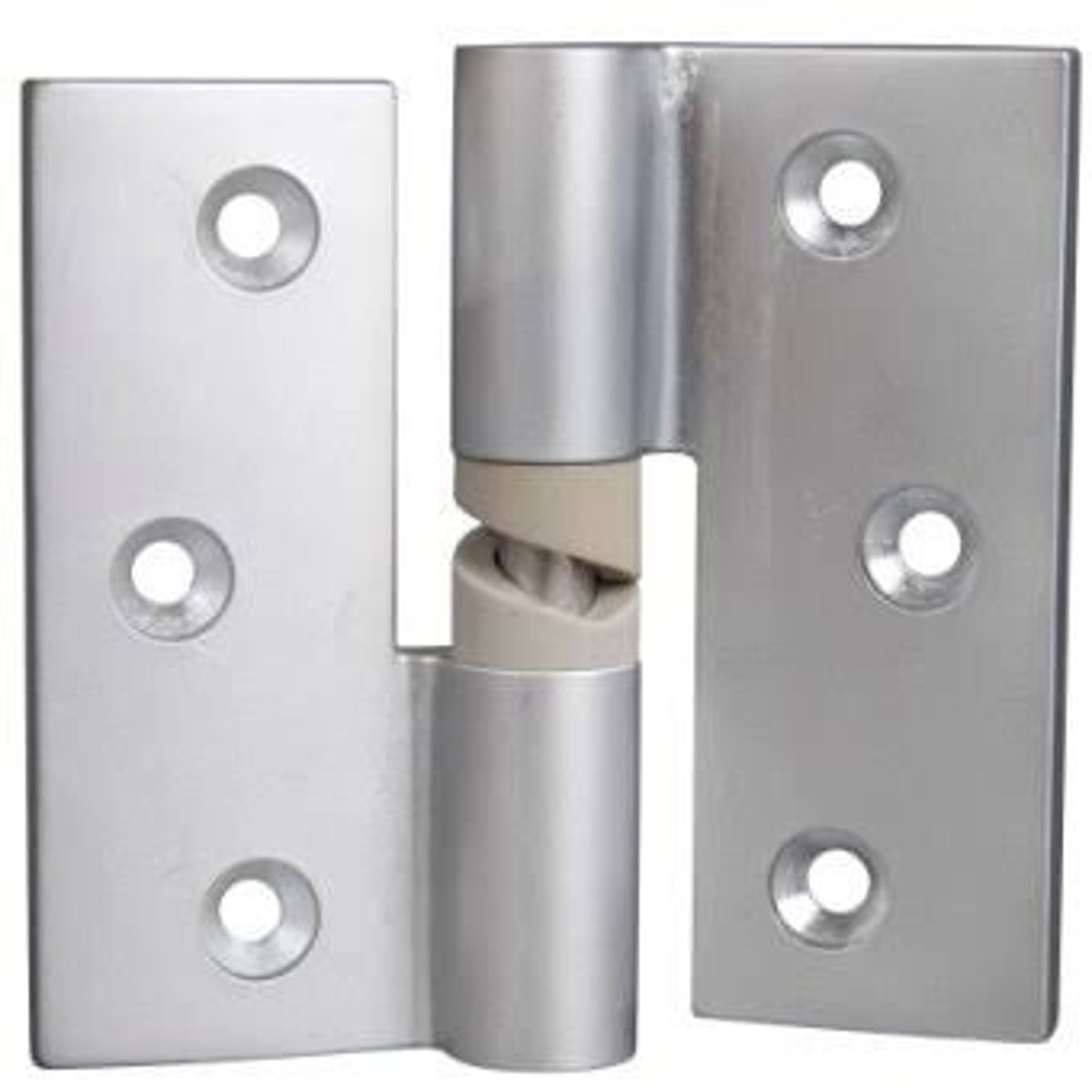
rising hinge
a gravity hinge causing a door to rise slightly when opened
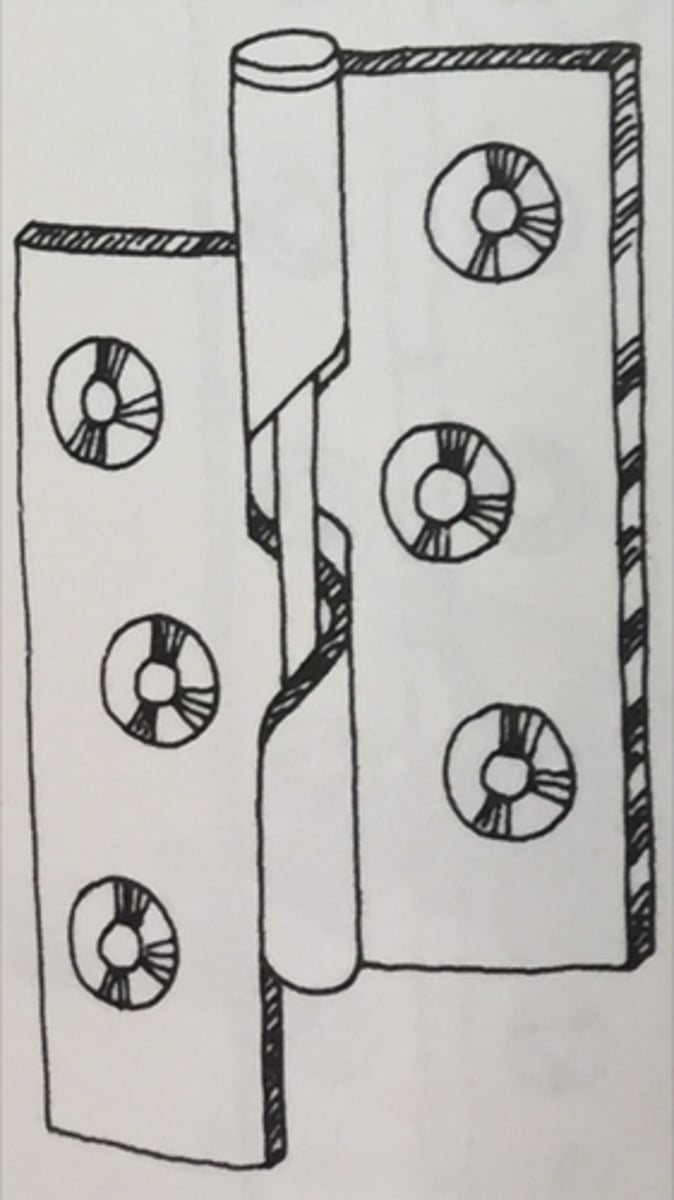
Decorative Hinge
Easy to fit as it is screwed to the outside of a cabinet. (ie. butterfly hinge)
Invisible Hinge/Concealed Hinge
A hinge consisting of a number of flat plates rotating about a central pin, with shoulders mortised into the door edge and doorframe so as to concealed when closed
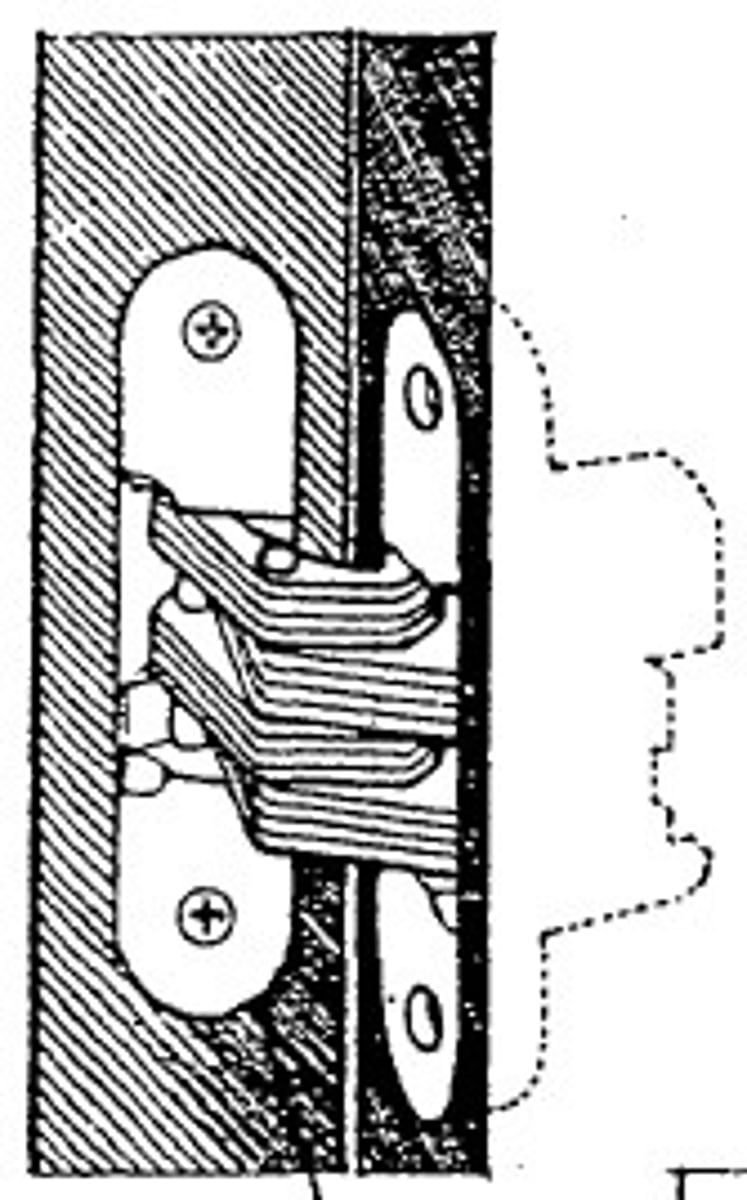
Glass door hinge
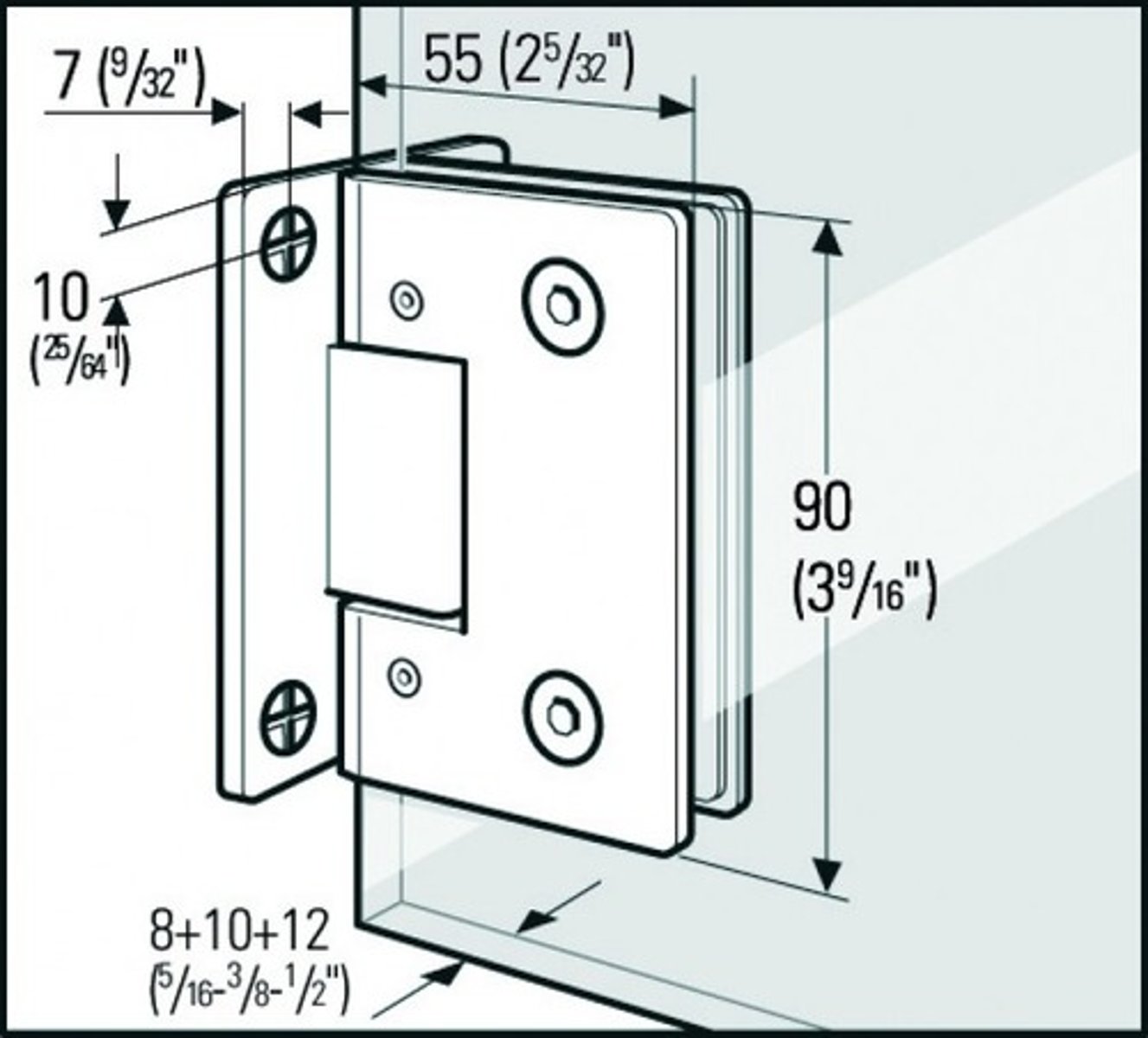
lock
a device for securing a door, drawer or lid in position when closed, consisting of a bolt or combination of bolts propelled and withdrawn by a key or combination-operated mechanism
lockset
An assembly of parts making up a complete locking system including knobs,plates and a locking mechanism
latch/latchset
a device for holding a door closed, consisting essentially of a bar that falls or slides into a groove or hole
mortise lock
A lock housed within a mortise cut into a door edge so that the lock mechanism is covered on both sides

preassembled lock/unit lock
a lock housed within a rectangular notch cut into the edge of a door; requires very little adjustment and usually found in older buildings
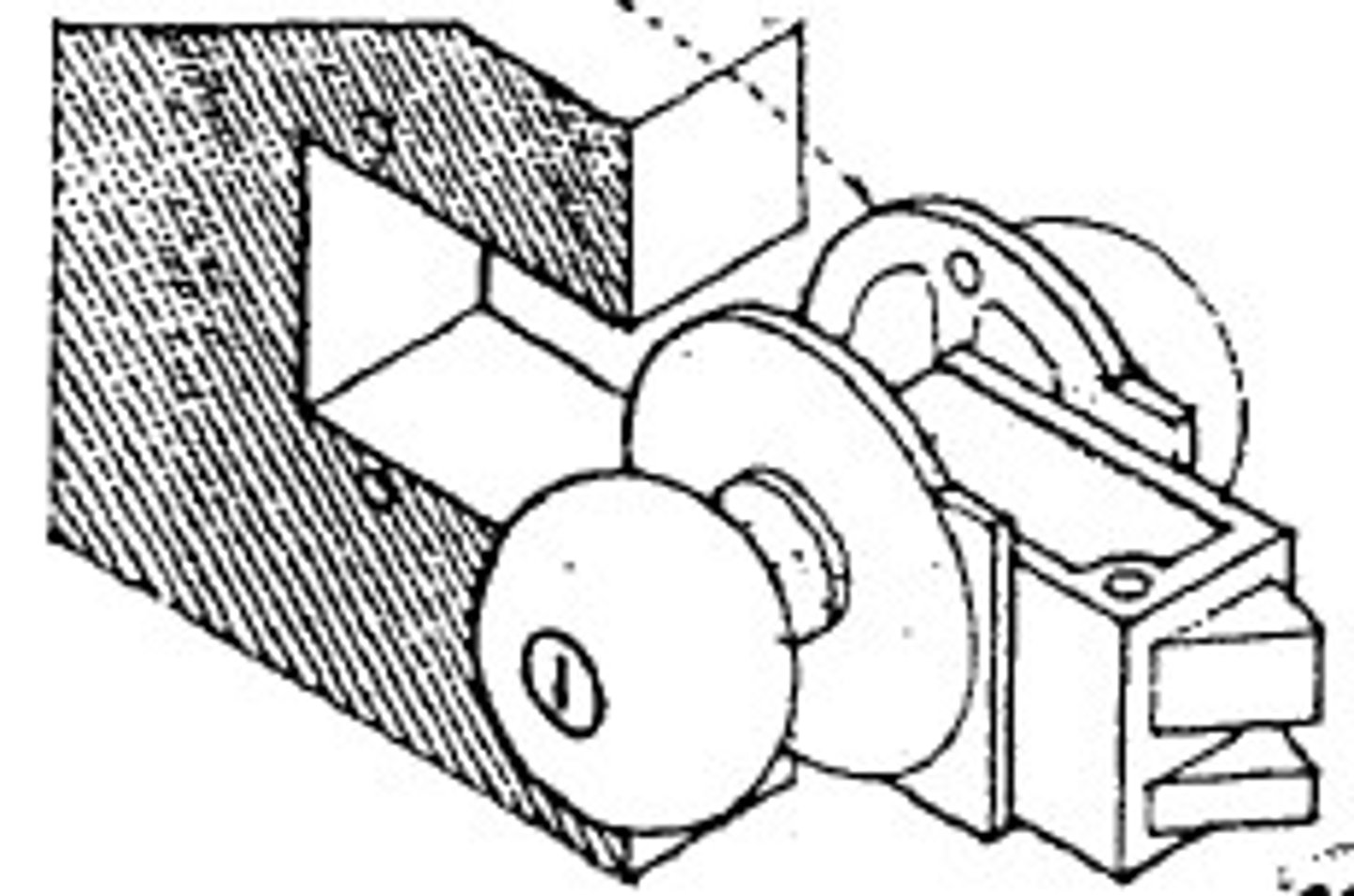
cylinder lock/bored lock
A lock housed withing two holes bored at right angles to each other, one through the face of the door and the other in the door edge; relatively easy to install; less expensive than mortise locks but offer fewer operating functions
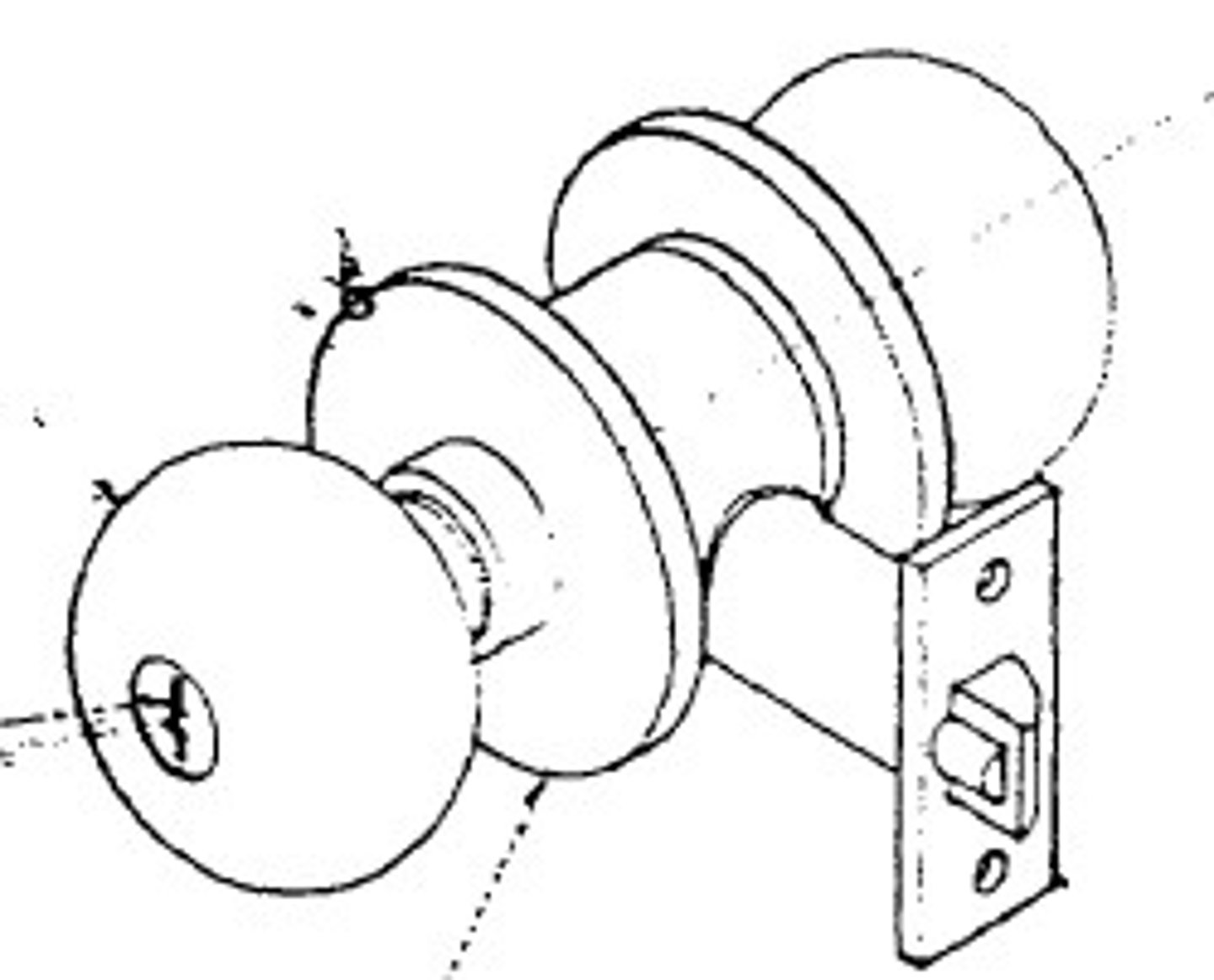
interconnected lock
have a cylindrical lock and a dead bolt; two locks are interconnected so that a single action of turning a knob on the inside releases both bolts

entrance lockset
an intricately designed lockset; operated inside with a key and a thumbturn or a universal button which when pushed stays put and locks the door.
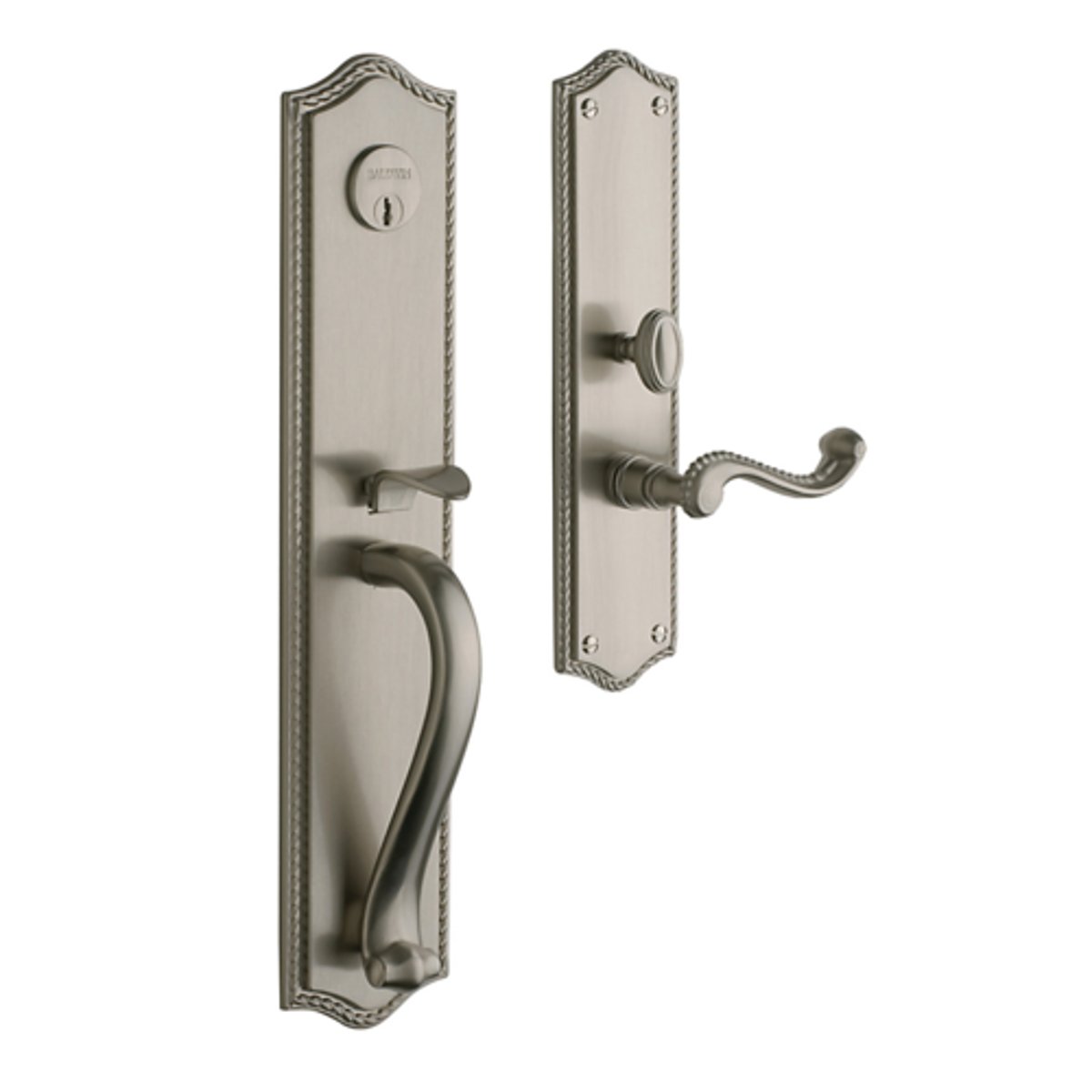
bedroom lockset
same as the entrance lockset but simpler in design.
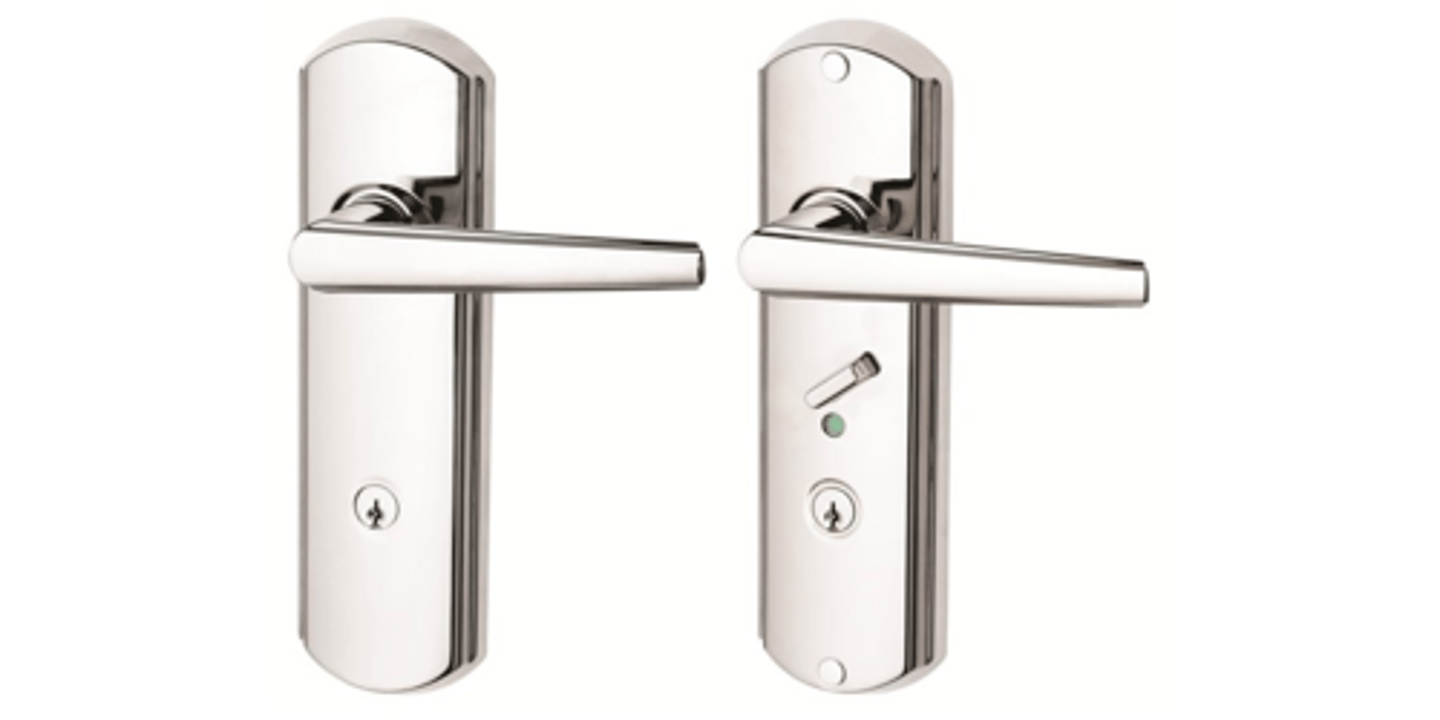
toilet lockset
a simply designed lockset which is locked from the inside by pushing, without a key, a universal button. To release, the cylindrical knob is turned from the inside only.
doorknob
The knob-shaped handle by which a door is opened or closed.
keyhole
A hole in a lock case or escutcheon for inserting a key
rose/knob rose
an ornamental plate surrounding the shaft of a doorknob at the face of a door/a round disk or plate fastened to the face of a door around the hole in the door through which the doorknob spindle passes.
faceplate
The edge plate or surface through which the bolt of a lock passes.also called selvage.
escutcheon
A protective or ornamental plate, as around a keyhole, doorknob, drawer pull, or light switch.
backset
The horizontal distance from the face of a lock through which the bolt passes to the centerline of the knob stem, keyhole or lock cylinder
bolt
a metal bar or rod in the mechanism of a lock that is propelled or withdrawn, as by turning a knob or key
deadbolt
A lock bolt having a square head that is moved into position by the turning of a knob or key rather by spring action
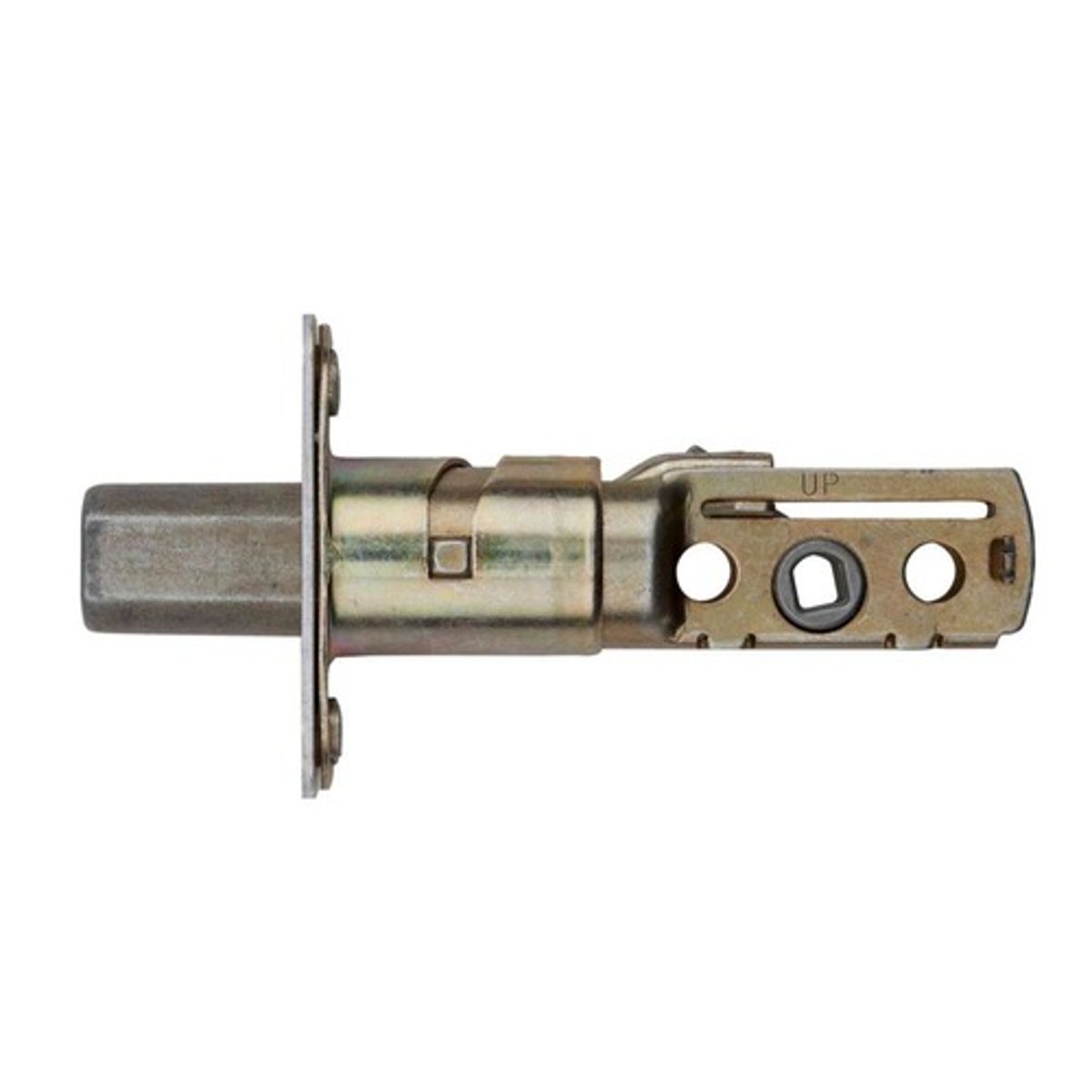
bevel
the oblique end of a latchbolt that hits a strike plate
latchbolt
a lock bolt having a beveled head that is moved into position by a spring except when retracted by a doorknob, or when pushed against the lip of the strike plate as the door is closed
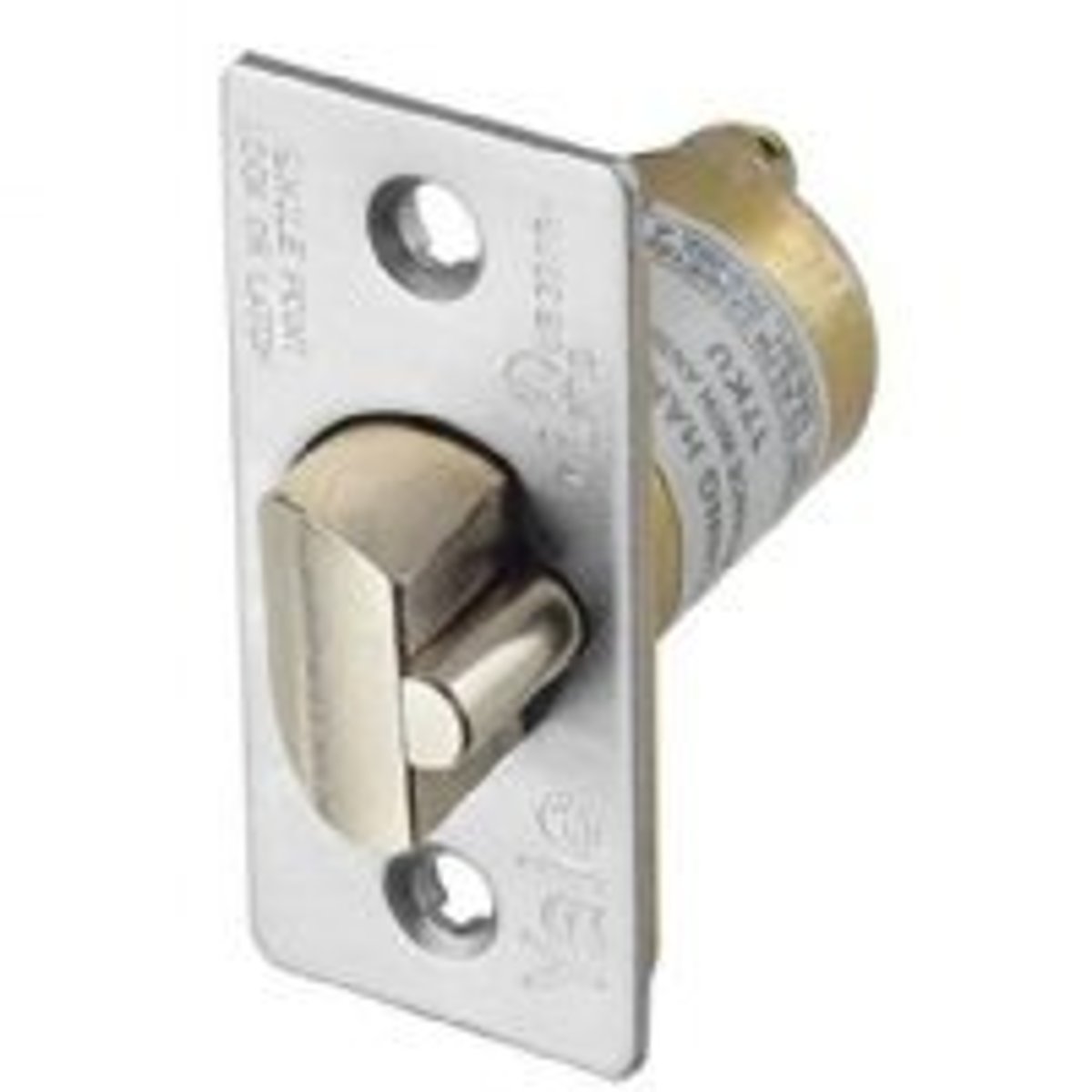
spindle
the bar or shaft that carries the knobs and actuates the latch or bolt of a lock
level handle
a horizontal handle for operating a bolt of a lock
strike/strike plate
a metal plate on a doorjamb having a hole for receiving the end of a lock bolt when the door is closed

box strike
A metal box recessed into a door jamb to receive the end of a lock bolt when the door is closed.
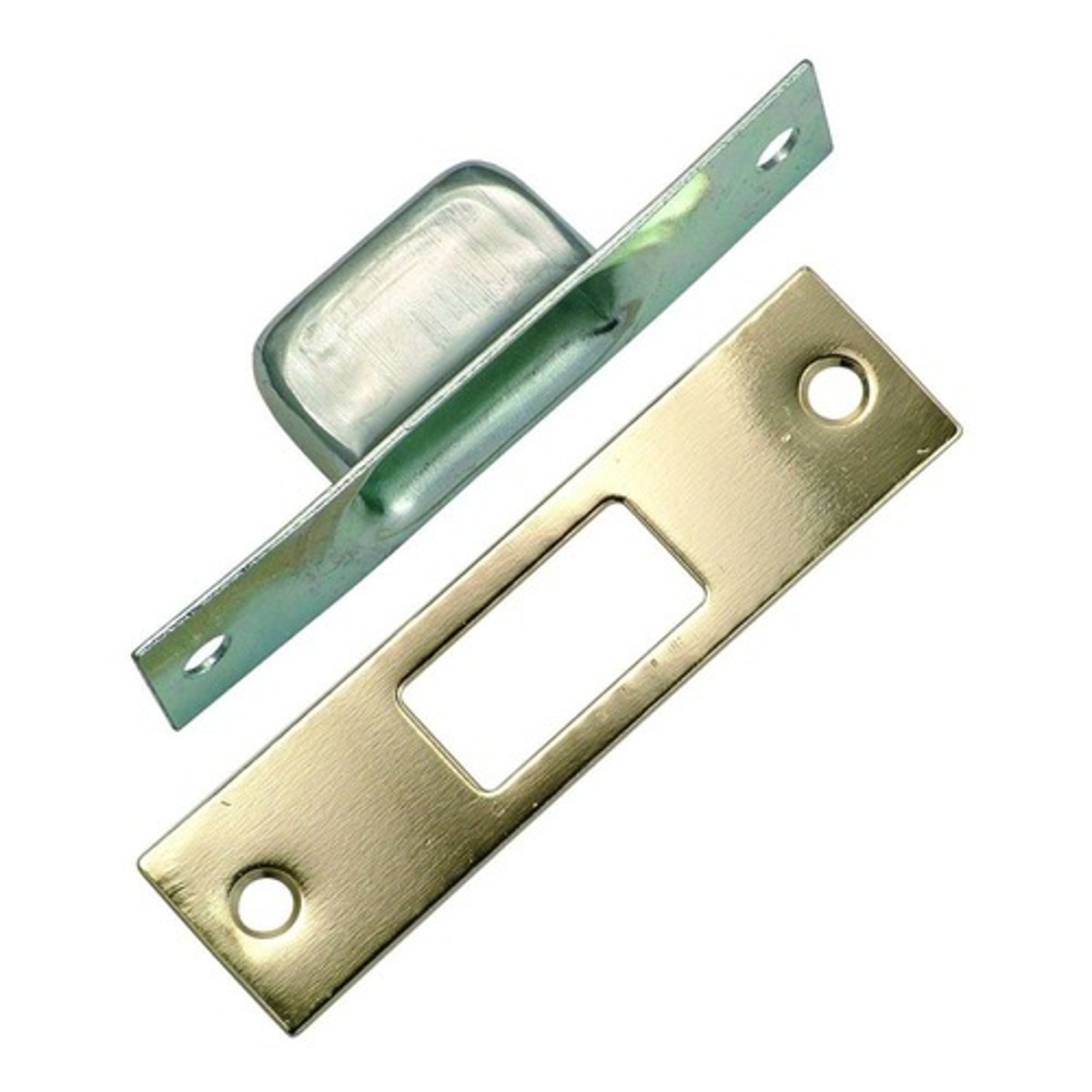
cylinder
a cylindrical device for retaining the bolt of a lock until the tumblers have been pushed out of its way
tumbler
An obstructing part in a lock that prevents a bolt from being propelled or withdrawn until it is moved by the action of a key.
lever tumbler
A flat metal tumbler having a pivoting motion actuated by the turning of a key.
cam
a disk or cylinder having an irregular form that rotates or slides to impart motion to a roller moving against its edge or to a pin free to move in a groove on its face
keyway
a slot in a lock for receiving and guiding a key
key
a small metal instrument specially cut to fit into a lock and move its bolt
bit
one of the projecting blades cut to engage with and actuate either or both the bolt and the tumblers of a lock
rim lock
A lock fastened to the face of the door, as opposed to one built into its edge
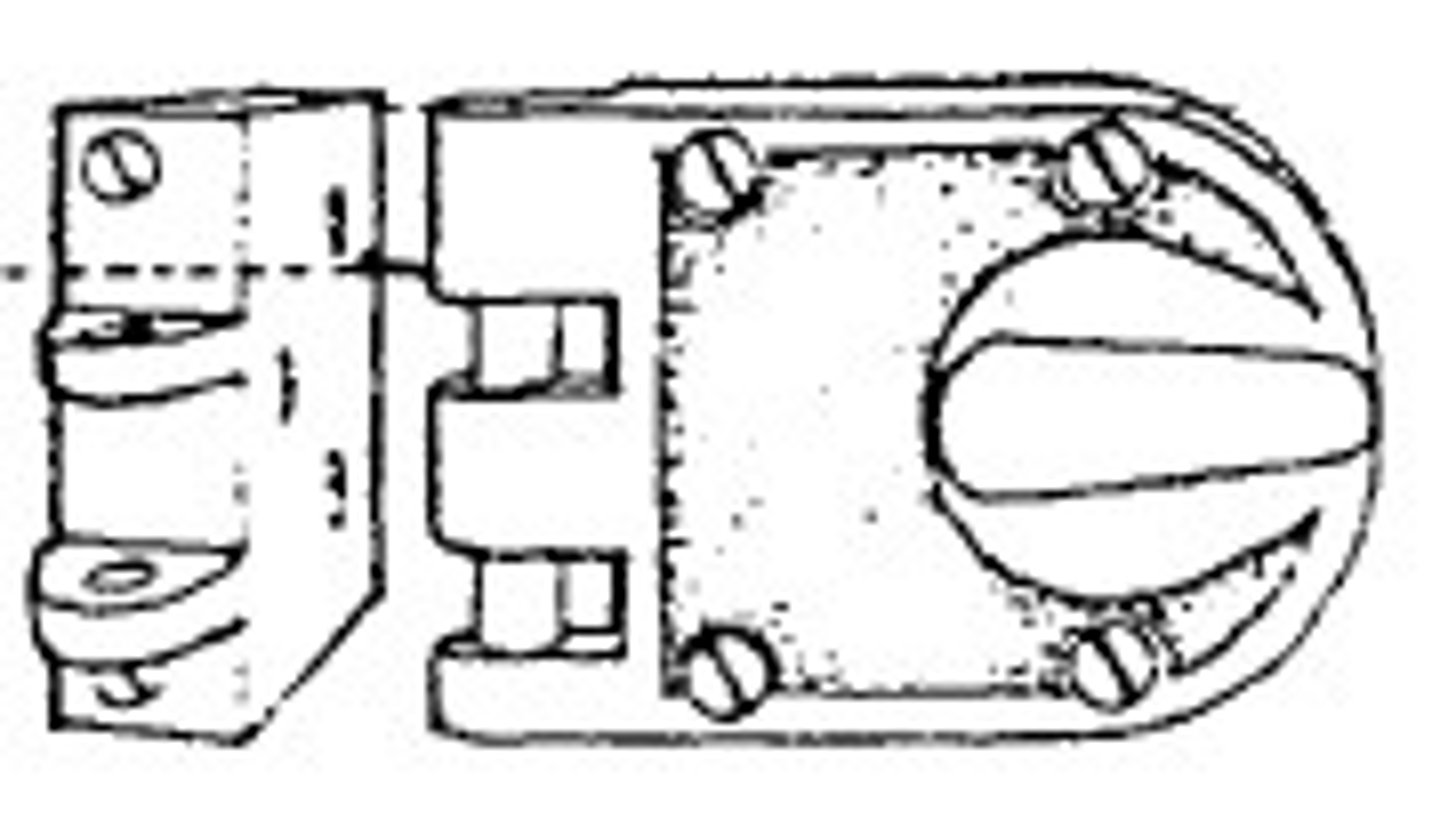
knob
a handle, more or less spherical, usually for operating a lock.
closers
devices that automatically return a door to its closed position after it is opened; can be surface mounted, head frame or concealed in the frame or door
pivots
Provide an alternative way to hang doors where the appearance of hinges is objectionable or where a frameless door design may make it impossible to use hinges; may be center hung or offset and are mounted in the floor and head of the door
panic hardware/panic bar
a horizontal bar that spans the interior of an emergency exit door at waist height and that opens the latch when pressure is applied
push plate/pull bar
used to operate a door that does not require automatic latching; used on doors to commercial kitchens
door stops/bumpers
small metal fabrications with rubber bumpers attached and are used to keep a door from damaging adjacent construction